THE NEW GENERATION
TIME FOR BUSINESSES TO DITCH WI-FI AND SWITCH TO 5G


HERE ARE FIVE BAD HABITS IN INSURANCE THE FUTURE OF BANKING COULD LIE IN THE METAVERSE
FINTECH FUNDING SLOWS AS COVID’S DIGITAL HYPE FADES HOW RETAIL STORES CAN REVAMP CUSTOMER EXPERIENCE BY GOING ‘PHYGITAL’

Issue No. 02 Display to June 30, 2023 The Asian Business Review
More insights. More business. Your business trends, on your mobile. Now you know. OCBC Business app. OCBC Business Banking Download the OCBC Business app now. Apple, the Apple logo and App Store are trademarks of Apple Inc. Google Play and the Google Play logo are trademarks of Google LLC. ASEAN Best SME Bank, 2022 Asian Banking & Finance Best SME Bank in Southeast Asia, 2022 Alpha Southeast Asia Best SME Bank in Asia-Pacific, 2023 Global Finance Asia-Pacific’s Best SME Bank
The Asian Business Review is a regional magazine serving Asia’s dynamic business community. Essential coverage includes the economy, investment, manufacturing, technology, travel, and trade. It offers fresh perspectives and ideas to guide its readers through the challenges and complexities of their businesses, providing opinion and analysis on all areas of business to improve performance.
PUBLISHER & EDITOR-IN-CHIEF Tim Charlton
PRINT PRODUCTION EDITOR
COPY EDITOR
PRODUCTION TEAM
FROM THE EDITOR

COMMERCIAL TEAM
GRAPHIC ARTIST
Jeline Acabo
Tessa Distor
Noreen Jazul
Djan Magbanua
Frances Gagua
Charmaine Tadalan
Consuelo Marquez
Vann Villegas
Janine Ballesteros
Jenelle Samantila
Simon Engracial
ADVERTISING CONTACT Aileen Cruz aileen@charltonmediamail.com
Reiniela Hernandez reiniela@charltonmediamail.com
ADMINISTRATION ACCOUNTS DEPARTMENT accounts@charltonmediamail.com
ADVERTISING advertising@charltonmediamail.com
EDITORIAL asianbusinessreview@charltonmedia.com
SINGAPORE
Charlton Media Group 101 Cecil St. #17-09 Tong Eng Building Singapore 069533 +65 3158 1386
HONG KONG
Charlton Media Group Hong Kong Ltd Room 1006, 10th Floor, 299QRC, 287-299 Queen’s Road Central, Sheung Wan, Hong Kong www.charltonmedia.com
PRINTING
Asia One Communications Group 13/F, ASIA ONE TOWER, 8 FUNG YIP STREET, CHAI WAN, HONG KONG
TEL: (852) 28892320 | FAX: (852) 28893837

Email: adriantsui@asiaone.com.hk | URL: www.asiaone.com.hk
Can we help?
Editorial Enquiries: If you have a story idea or press release, please email our news editor at asianbusinessreview@charltonmedia.com To send a personal message to the editor, include the word “Tim” in the subject line. Media Partnerships: Please email asianbusinessreview@charltonmedia.com with “partnership” in the subject line.
Subscriptions: Please email subscriptions@charltonmedia.com.
The Asian Business Review is published by Charlton Media Group. All editorial contents are copyrighted and may not be reproduced without consent. Contributions are invited but copies of all work should be kept as The Asian Business Review can accept no responsibility for loss. We will however take the gains.
Sold on newstands in Singapore, Malaysia, Hong Kong, London, and New York. Also out in sbr.com.sg with online readership of 215,000 monthly unique visitors*. *If you’re reading the
The times are indeed changing, and so are the behaviours of consumers and employees and their expectations from business providers. Adopting flexible working conditions is notably slower in APAC than in other regions due to lower levels of managerial trust. Paul Seow, Associate Director at Asia Pacific Total Workplace, explains why now is the perfect time to reconcile that gap between the executors on the ground and the C-suites in an interview on page 12. Meanwhile, ANEXT Bank’s CEO Toh Su Mei talks about the role that digital banks play in staying ahead of SMEs’ financial needs in an interview on page 24.
When businesses rely on Wi-Fi, they are at risk of not being able to make fast and accurate decisions in critical situations given its higher latency. John Lombard, CEO of NTT Ltd (Asia Pacific), explains how this risk can be eliminated by adopting a private 5G connection in an interview on page 30.

Innovation is essential for every business. The Asian Business Review honours outstanding companies that showcased innovation for business development at the recent Asian Technology Excellence Awards, Middle East International Business Awards, Middle East Technology Excellence Awards, the Asian Experience Awards, the Asian Export Awards, and the China International Business Awards. See the full list of the esteemed winners on pages 38, 62, 76, 90, and 92.
Read on and enjoy.
Tim Charlton
The Asian Business Review is a proud media partner and host of the following events and expos:
THE ASIAN BUSINESS REVIEW 1
be missing the big picture
small print you may




2 THE ASIAN BUSINESS REVIEW SINGAPORE BUSINESS REVIEW | MARCH 2018 CONTENTS Published Biannually by Charlton Media Group 101 Cecil St. #17-09 Tong Eng Building Singapore 069533 For the latest business news from Singapore visit the website asianbusinessreview.com FIRST INTERVIEW FINTECH POWER RETAIL 30 INTERVIEW TIME FOR BUSINESSES TO DITCH WI-FI AND SWITCH TO 5G EVENT 38 Outstanding initiatives recognised at the Asian Technology Excellence Awards 62 Get to know the exceptional winners of the Middle East Awards 2022 76 Innovative, experience-centred initiatives honoured at the Asian Experience Awards 90 Esteemed companies hailed in The Asian Export Awards 2022 92 Take a look at the winners of the China International Business Awards 2022 BANKING & FINANCE THE FUTURE OF BANKING COULD LIE IN THE METAVERSE 16 06 Hospitals launch metaverse clinics as virtual reality healthcare takes off 08 How brands can craft the right ‘Shoppertainment’ 09 SEA consumers see online shopping as ‘integral’ part of life 10 Climate risk-related losses are an increasing challenge for reinsurers 12 Closing gaps between C-suites and workers with flexible workspaces in APAC 24 How to stay ahead of SMEs’ financial needs 26 Tourists now prefer ‘less adventurous’ itineraries 22 Fintech funding slows as COVID’s digital hype fades 28 Southeast Asia’s nuclear energy ambitions dashed by public opinion 20 How brick-and-mortar stores can revamp customer experience by going ‘phygital’ 18 INSURANCE HERE ARE FIVE BAD HABITS IN INSURANCE ACCORDING TO HK’S INSURANCE REGULATOR
Data Center Automa�on
Increase the speed and Agility of Business Services by Automating your data centers networks.
Intent Based Networking automation and orchestration providing all you need to deploy, maintain, and manage your Data Centers networking to act and achieve results faster.


Daily news from Asia
Residential sales to take a hit from banks’ increased fixed-rate home loans

Rising interest rates was amongst factors that led to the crash of home sales in June (-64% MoM). This is why the news of banks in Singapore increasing their fixed-rate home loans—or worse, suspending them— has raised red flags, especially since the market had just gotten out of its “state of pause”.
Conversational commerce levels the playing field for brands online



Fiona Thia, business development director at TMX, was looking for a ring online. She received a message from the brand asking for a photo of her finger to help settle the size and assuring her that if the item did not fit, she can have it exchanged for free. In the end, Thia became one of the brand’s satisfied customers.
Hong Kong’s 10 most influential lawyers under 40 for 2022
Hong Kong’s roster of exceptional lawyers has made the city an irreplaceable legal hub for businesses and high-profile individuals from the Mainland and other parts of the world. Hong Kong Business recognises 10 young lawyers who have raised the bar for legal professionals across all fields in 2022.
‘Mass exchange’ of lawyers push legal firms to review retention strategies
Singapore’s legal industry, similar to those in the US and UK, was hit by the great resignation wave. Many of these lawyers have either moved to other firms or taken in-house positions, resulting in a shortage of mid-level lawyers with four to seven years of Post-Qualified Experience (PQE).
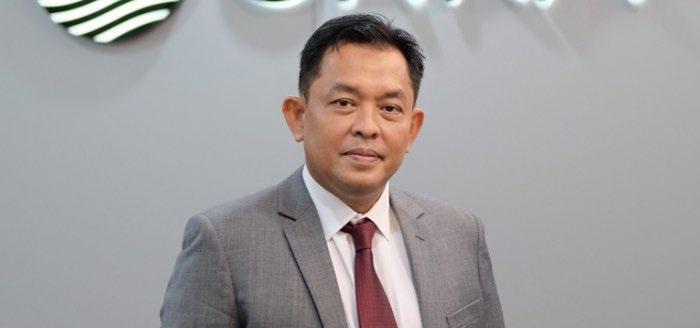


KS Orka’s gradual development model increases geothermal success
When it comes to developing geothermal power plants, the traditional approach can be risky and time-consuming. But Indonesian power plant developer KS Orka has found a solution: the gradual development model. This model enables KS Orka to minimise operational risk and costs.
How Singapore banks are closing the gender gap in hiring
Top Singaporean banks are exceeding projected regional average growth of hiring women in executive positions. Deloitte’s Within Reach series predicted that by 2030, women in senior leadership roles, specifically C-suite, will grow to 20.5%, a moderate increase from 18.5% in 2021.
HUMAN RESOURCES RETAIL BANKING POWER News from asianbusinessreview.com
RESIDENTIAL PROPERTY RETAIL LEGAL MOST READ


Hospitals launch metaverse clinics as virtual reality healthcare takes off
Indian healthcare group Yashoda Hospitals from Hyderabad is the latest healthcare provider to join the metaverse trend by buying virtual land on the platform.

In a statement, the hospital management said this move will allow the healthcare group to render its treatment on the metaverse and even employ metaversians.
Yashoda Hospitals is also the first healthcare group in India to tap the metaverse for its services. Dr. Abhinav Gorukanti, Head of Yashoda Hospitals, said establishing their presence on decentralised land will ramp up their efforts to accept decentralised technology.
“We will continue to upgrade and invest in making our digital infrastructure futureready,” he added, pointing out that the hospital has since been open to adopting digital technology.
UAE healthcare firm starts virtual hospital Other hospitals in Asia also followed suit in the metaverse hype. Thumbay Hospitals, a United Arab Emirates-based healthcare firm,
had announced its plans to create a virtual hospital on metaverse to talk with patients and improve patient experiences.
In a statement from Thumbay.com, the full-fledged virtual hospital will be built in a multi-phased project on a metaverse platform, which will give patients an immersive experience in healthcare. There will be a patient experience centre, a walkthrough of hospital and services, teleconsultation, multiple doctors consulting a case in a virtual clinic, and avatars in the local language and dress to talk to patients in the medical tourism department.
There will also be the “first AID and preventive health programs using AR/VR and AI programs to educate patients and suggest treatment plans.”
Thumbay Virtual Hospital will also provide health tips on inpatient hospital and room experience for elective surgeries, a surgery
that can be done in advance. Under phase one of the Thumbay patient experience, the application will be developed by visualising the Thumbay Medicity.
“The user will be able to create a base avatar. They could customise their avatar based on hair colour and skin tone, which will have two options each. The receptionist at the hospital would greet the users in their native language,” read the statement.
Commenting on the integration of metaverse in its business, Thumbay President Thumbay Moideen said: “We are very excited to take up these initiatives and be in line with the developments of the future and explore all opportunities to develop our core business in Education, Healthcare, Research and Wellness domains.”
Metaverse research in South Korea
A news report showed that a Medical Metaverse Research Society was rolled out through the joint sponsorship of the Seoul National University Metaverse Lab and the Seoul National University Hospital Innovative Medical Technology Research Center Smart ICT Lab.
This research society seeks to promote academically in the prevention, treatment, and management of medical illnesses and ailments through Metaverse innovations. The research society will also back public and private partnerships and industry-academic cooperation and plan to establish a framework for medical metaverse experts via training projects and global academic exchanges.
SEA hospitals
Two Southeast Asian hospitals previously saw big opportunities in using virtual and augmented reality to enhance telemedicine services, with patients one day potentially tapping the metaverse for recovery.
These hospitals, Malaysia-based IHH Healthcare and Indonesia’s Siloam International Hospitals began using telemedicine in 2020 when the severe respiratory disease crisis started.
They also used technology to reach patients hit by stringent health protocols or those living in remote areas. These hospitals also started exploring AI and data analysis to improve patient treatment.
Now, they think virtual reality (VR), augmented reality (AR), and the metaverse will expand into healthcare.
6 THE ASIAN BUSINESS REVIEW FIRST
Yashoda Hospital joins the metaverse. Photo from Yashoda Hospitals website
We will continue to upgrade and invest in making our digital infrastructure future-ready
ASIA PACIFIC
Immersive
Digital Experiences
can bridge the physical and digital gap for tennis and many other organisations.

Infosys helps our clients accelerate their digital journeys, leveraging these capabilities to hyper-personalise and humanise experiences.
Explore AO Experiences here

THE ASIAN BUSINESS REVIEW 7
© 2021 Infosys Limited, Bengaluru, India.
CONSUMERS ARE WILLING TO PAY MORE FOR 'GREEN'
More than 70% of consumers said they are willing to pay higher for products that have a positive impact on the environment or health, Bain & Company reported.
Shoppers in Asia-Pacific led with 90% of consumers who are willing to pay more, followed by European consumers (74%), and American consumers (71%).
Despite this, Bain & Company found that most consumers are not changing their shopping behaviors.
“Inflation is of course making consumers more sensitive to price – but at the same time it’s also encouraging them to revisit deeply engrained consumption habits,” Luciana Batista, a Partner in Bain’s Retail, Consumer Products and Sustainability practices, said.
“This offers a rare opportunity for retailers to disrupt the status quo and encourage circular models that see consumers returning products or reusing packaging for a discount in the future. Combined with greater choice and clear communication at the point of sale, inflation can be a catalyst for more sustainable behaviour.”
Investments
Moreover, the report found that the higher inflation is also worsening the funding gaps challenge retailers face in investing in sustainability.
“A high-risk environment may reduce investment into sustainability in the short term but there is much retailers can do to decarbonise without making significant financial investments,” Luciana also said.

“Energy and waste saving measures can help to reduce costs and exposure to risk in the short term, while more comprehensive commitments are developed.”
How brands can craft the right ‘Shoppertainment’
ASIA PACIFIC
Retailers need to adopt a video-first approach focusing on education and integrating storytelling and even comedy in order to tap the US$1t "shoppertainment" and capture more consumers, according to a report by Boston Consulting Group and social media platform TikTok.

Brands should tell stories and educate. This could be accomplished by telling a story about a certain brand or product and piquing their interest in a way to educate them and integrating comedy to offer entertainment and engagement.
They should also adopt a “videofirst approach” characterised by short content to retain consumers’ attention, and tap influencers that will help amplify your message.
The report also stated the brands should not force decision-making and that their contents should only contain interests and hobbies the consumers can relate to.
“Target good feelings and nostalgic recollections that rekindle excitement, whilst building stories around uplifting and engaging themes,” the report read. Authenticity in content that will inspire others is also vital for brands to have along with credible reviews and open and engaging community conversations. Brands should also recommend trends by including insights from community experts and enable extended conversations between friends and users, and “build them into a strong and trusted culture and following.”
They should also provide clear information about a product that can be accessed easily and properly communicated, and they should also ensure that there is a “clear and intuitive path to purchase.”
Shoppertainment could open $1t opportunity for APAC brands
Brands in the Asia Pacific region can gain $1t in market value by 2025 due to the rise of “Shoppertainment,” according to a report by Boston Consulting Group and social media platform TikTok.
According to the report, Shoppertainment, a content-driven commerce that targets to entertain and educate first whilst integrating content and community, is expected to grow annually by 63%, across markets included in the report.
Target
good feelings and nostalgic recollections that rekindle excitement
Australia, Indonesia, Japan, South Korea, Thailand, and Vietnam were expected to drive significant value opportunities in shoppertainment.
Sam Singh, Vice President of Global Business Solutions for APAC at Tiktok, said this form of e-commerce is another avenue for businesses to tap as consumer habits continue evolving and “people are looking to be delighted online.”

“This presents an opportunity for businesses to embrace Shoppertainment: a content-first approach where brands educate and entertain audiences. Shoppertainment combines content and culture and commerce in a seamless way, allowing brands to engage with audiences throughout the purchasing journey without overtly selling,” Singh said.
“This allows brands to meet both functional and emotional needs, thereby building stronger and longer relationships,” he added.
8 THE ASIAN BUSINESS REVIEW FIRST
‘Shoppertainment’ should tell a story and be authentic
ASIA PACIFIC
Sam Singh
SEA consumers see online shopping as ‘integral’ part of life

Atotal of 73% of Southeast Asian consumers are now considering shopping online to be “integral to everyday life,” according to a report by Lazada.
In a statement, Lazada said it Regional eCommerce Consumer Study conducted with Milieu Insight also showed that nearly 60% of the consumers welcomed online shopping as part of their daily life only less than two years ago.
“Digital commerce has changed the way people shop in the past decade, especially in the last two years with the pandemic
accelerating the shift towards online retail. Such changes are showing a lasting effect, especially in emerging markets,” James Chang, Chief Business Officer of Lazada Group said.The report also showed that 67% of online shoppers in the region identified eCommerce Mega Campaigns such as 11.11 and 12.12 sales as a key factor in shaping the consumer buying behaviour.
The study also found that low prices and affordable shipping are the top reasons for the consumers’ online purchase, followed by ease of search and convenience, with
55% of consumers from Singapore, 48% from Thailand, and 49% from the Philippines preferring items to be delivered straight to them.
Reviews and rating are also a key factor to a positive shopping experience especially for Singaporean (61%) and Thai (66%) consumers, it said.

Buying authentic products is also a top reason for online shopping in Singapore (54%) and Vietnam (53%), whilst the variety of available payment options are important for Indonesia (54%). Secure payment options, meanwhile, are important for Singapore (53%) and Malaysia (45%).
The Lazada report also showed that consumers in the region are actively choosing items to purchase through digital channels, with 65% saying that they already know where to buy when shopping online.
It also found that 29% of the respondents want an enhanced engagement with the platform through additional browsing for best deals and exploration of the platform for additional items before completing the sale to augment experience.
Due to the pandemic, the priority set on wellness is likely to stay, with 58% of the respondents spending on Health and Beauty categories, it said.
FIRST
Consumers are actively choosing items to purchase through digital channels
SOUTHEAST ASIA
Climate risk-related losses are an increasing challenge for reinsurers
The increased frequency of natural disasters is pushing up the cost of reinsurance as well as the demand for catastrophe protection, according to a report by S&P Global Ratings.
The report highlights that rising catastrophe claims are increasing costs in reinsurance which in turn will inflate the costs for primary insurers, and ultimately, the consumers.
“We expect policymakers in Asia-Pacific will increasingly collaborate with reinsurers, in an attempt to maintain affordability and necessary protection, as well as bolster risk awareness,” WenWen Chen, an Insurance Analyst at S&P Global Ratings.

Climate risk-related losses, especially those caused by weather-related disasters, are a challenge for insurance and reinsurance firms, especially in the pricing mechanism and assessment of pricing adequacy.
In fact, for Asia-Pacific, each year seems to bring outsized natural-disaster claim records to respective jurisdictions related to events such as flooding, drought, and typhoons. Recent examples include the heatwave in China, which interrupted power supply and led to industrial stoppages for some producers, and in Korea, where flooding and typhoon caused record natural disaster costs.
Chen said that surges in claims don't just hit the insurance and reinsurance industry. They have broader social costs.
“Homeowners and businesses face surging insurance premiums--or widening gaps in protection if they can't afford their premiums. Fiscal burdens also rise, as the government foots the bill for social assets and infrastructure losses, clean-up, and other types of remediation. Climate change is also high on the agenda for policymakers,” Chen said. These broader costs are motivating governments to get involved. One recent example is in Australia where heavy flooding in the first quarter of this year caused $3.6b in insured losses, making it one of the costliest natural catastrophes in Asia-Pacific. Natural disasters for three consecutive years have led to surging catastrophe-coverage costs for homeowners in the affected areas.
In July 2022, the Australian government established a reinsurance pool, under the Australian Reinsurance Pool Corp., for cyclone and related flood damage in Northern Australia, backed by a AU$10b government guarantee. This covers residential, strata (or common area) and small business property. Participation is mandatory for property casualty insurers with eligible policies. Large insurers must
participate by 31 December 2023.
“The hope is that the pool will stem some of the inflation in reinsurance cost for primary insurers, and subsequently insurance prices, which will, in turn, will pass on savings to policyholders and prevent coverage gaps from widening,” Chen explained.
Reinsurance in agriculture
Another change that the reinsurance market is facing due to growing natural catastrophes is it has accelerated the agricultural insurance market, especially in emerging Asia. This is further supported by growth prospects in agriculture insurance as well as many policymakers’ initiatives to protect farmers and facilitate such growth.
Many emerging Asian markets have also set up insurance schemes to help build farmers' awareness. These include the National Rice Insurance Scheme established by the Thai government; the rice farming business insurance program in Indonesia; and the public-private partnership on agriculture insurance in the Philippines.
Another example is China which it safeguards farming outputs, by allocating $4.69b (CNY33.4b) to agriculture insurance subsidies in 2021, a 16.8% year-on-year increase. This segment climbed 30% YoY for H1 2022. S&P predicts agriculture insurance in China will continue its rapid growth, likely at 30%-50% over the next two years.
Recent weather events may also motivate farmers to buy more protection. Chen said that policymakers will likely consider widening coverage for agriculture insurance. An intense heatwave and low rainfall in China have led to severe drought in Sichuan and other southwestern locales. Property and casualty (P/C) insurers with large agriculture exposures in these provinces could face swings in their underwriting results. Claims may grow if the drought persists or has more prolonged effects. Sichuan is also in an earthquake zone, compounding its vulnerability.
Long-term solution
According to S&P, technology initiatives will be a must for APAC reinsurers to maintain a home advantage. This is because stakeholders across the value chain will strengthen risk management.
“For primary insurers, this could include using technology to enhance risk assessment, as well as supporting pricing analysis and selection in policy underwriting.
10 THE ASIAN BUSINESS REVIEW FIRST
Governments will link arms with reinsurers to fortify natural disaster defence
Homeowners and businesses face surging insurance premiums– or widening gaps in protection if they can't afford their premiums
ASIA PACIFIC
Why Paragon Trading Asia believes the finer
Sustainable and luxury are probably two words that aren’t often seen together but Paragon Trading Asia made it happen by spearheading a different kind of sustainability: one in luxury lifestyle quintessentials.
Established in 2021, Paragon Trading Asia stands on four pillars that most would attribute to wealth: wine, water, whisky, watches, in all of which the company consciously applies sustainability practices.
CEO Christopher Liang, having been an avid collector of the finer things, had the “good opportunity back in 2018, to be part of a corporate finance takeover with an Australian family office to take control of the vineyard which now produces some of the best wines from New Zealand.” This opportunity gave birth to Gladstone Vineyard wines. Established in 1986, the wine label is recognised as a pioneer wine producer in New Zealand and today produces Viognier, PInot Gris, Rose, Pinot Noir, Sauvignon Blanc varieties.

SUSTAINABILITY IN A BOTTLE
The limited production and application of organic principles hugely contribute to the sustainable business.
“We actually produce in boutique volumes every year. And it doesn’t stop us from getting a very good quality rating,” Liang proudly says, after Gladstone Vineyard wines garnered a minimum of 90 points from wine experts Rebecca Gibbs and Robert Parker.
Aside from these, Paragon Trading also boasts to ship wines overseas in 80% recycled, lightweight bottles which reduces the amount of fuel during transport. Across the business, the company also uses recycled office paper, recyclable toners and printer consumables; reuse wine boxes, case dividers, glass, plastic, paper, tins and cardboard in packaging; using environment-friendly cleaning products; and source from local and environment-friendly suppliers where possible. Even the winery’s design maximizes natural lighting as a source of daytime light to reduce energy consumption.
The company is also trying to become a member of as group that supports organic winemaking and organic wine packaging. “We bottle all of our premiere crus with 100% organic cork, and use recyclable or biodegradable glass for a sleek and ESG conscious package” said Liang.
“Regarding the gins and whiskies from Ireland, we are making a move to reduce the use of paper by etching the logos of different
products directly onto the glass of our bottles.” Liang added. Today, Paragon Trading distributes its wine and whiskey through renowned distributors in Asia. including Watson’s wine in Hong Kong, distributors with sector expertise in Europe and the US, and Magnums in Singapore.
PHENOMENAL-BEWATER
Another one of Paragon Trading’s product, an environmentally friendly alternative to plasticbottled water, beWater™, was created to help eliminate single-use plastics and reduce the impact of table water.
a visit to some of these venues every week to talk to them about collecting the used cans, which could be recycled for a nominal sum and benefit from government subsidies,” Liang said.
CIEL WATCHES: THE SKY’S THE LIMIT
Ciel is Liang’s private-label Swiss watch brand and a homage to his passion for the finer and enduring things.
“This is a labour of love and is made up to Swiss horological association standards. I’m trying to promote this amongst a certain segment of the demographic simply because I want to see this memory kept as a collectible,” Liang said.
Ciel, which means ‘sky’ in French, features a moon-shaped second hand, sapphire crystal mechanism with stainless steel case, and highprecision Swiss movement. Only 500 pieces of this limited edition brand circulate worldwide, each uniquely numbered, sold on consignment and upon special dispensation. The natural jewels and authentic Swiss parts are rare even on the high-end market, he claims.
Customers who buy a Ciel watch will receive a “certificate that allows any of our clients who experience technical problems with the watch, to bring it into a Ronda time centre,” two of which are in Switzerland and one in Hong Kong. As the market opens up following COVID-19 restrictions, “We are happy to start promoting select batches of the watch through several multibrand jewelry and watch shops.
BETTER WITH AGE
Catering to an exclusive market will ensure that his products maintain their enduring and high quality, and Liang foresees his products penetrating the upper crust of the Asia Pacific.
“I hope we could improve the connection between different markets so that my stock of very fine wine and spirits could be enjoyed throughout the region.”
“We had created this new concept around 2020, whereby we advocated for the use of aluminium cans rather than plastic bottles as the packaging of choice for the new generation of waters. We managed to get the patent from Ball, a Fortune 500 company that are supportive of our mission and vision. They gave us exclusive rights to package water using aluminium packaging for the next five years in Asia Pacific. This is a big, unique selling point for our waters,” Liang relates.
“Our team of canister collectors would pay
The next phase of marketing involves charitable events and wine tastings in Thailand, Hong Kong, Malaysia, the Philippines, and even Taiwan, supported by a chamber of commerce for wine in Hong Kong, where he sits as chairman.
“It will be nice to host these educational events from time to time as an opportunity for people to mingle and to try our latest vintages, but also to become a loyal member of Paragon Liquors.” Liang said in closing. “The good news is, I’ve got time on my side. I’ve got products that only get better with age.”
THE ASIAN BUSINESS REVIEW 11
Luxury and sustainability meet over a CEO’s passion for the exquisite and drive for change.
things in life should be sustainable
-CL CO-PUBLISHED CORPORATE PROFILE
PASSION, STRENGTH AND HONOUR. TASTEFULLY DISTILLED IN EVERY DROP OF OUR QUALITY CREATIONS.
INTERVIEW
Closing gaps between C-suites and workers with flexible workspaces in APAC
Flexible work adoption is slower in the Asia Pacific due to lower levels of managerial trust.
Adopting flexible working conditions is notably slower in Asia Pacific compared to other regions across the globe. This may cause concerns because it is unlikely that the world will revert to the old ways of doing work, real estate analysts said. In its Asia Pacific Office of the Future Revisited report, Cushman & Wakefield found that the shift to flexible working is much more pronounced in North America with more than 50% wanting to attend the office “3 days a month or less,” as compared to 20% in Asia Pacific, though there is intraregional variance.
“Whether you were ready for it or not, the pandemic has changed the world, more so the corporate real estate, and office culture. [Companies] need to listen to the employees and [employees, in turn, really need to] understand why the office is going to be important in the future,” Paul Seow, Associate Director, Asia Pacific Total Workplace, told the Asian Business Review
“It is the perfect time to reconcile that gap between the executors on the ground and the C-suites.”
Cushman & Wakefield tried its hand at reimagining the office of the future after moving into CapitaSpring, with the destination office exuding the same vibe as the best bars in Singapore, as well as transforming its C&W Services Singapore’s Chai Chee office into a “living lab of technology and innovation”. Seow noted that in treading this path, the company made sure the office was designed with workers at its centre.

“When we were listening to our employees, we used our proprietary workplace strategy tool Experience per Square Foot,” Seow said.
“Together with focus groups and roundtable sessions, our Total Workplace team got to the gist of what was important for our community, both from a business perspective as well as from an employee experience perspective.”
Can you walk us through some of the preliminary findings of the APAC Office of the Future Revisited report?
There are three major takeaways from our Asia Pacific Office of the Future Revisited report. First, the demand for office space continues to grow in the Asia Pacific markets and this demand will more than offset the impacts of flexible working resulting in ongoing net positive absorption. The predominant migration flow in the Asia Pacific is from rural areas to urban cities, and Asia’s major cities are expected to remain the dominant economic and employment centres in the region.
Second, hybrid working is here to stay; however, the adoption of flexible work practices is slower as compared to the Americas and EMEA. The desire to work flexibly sits in a bit of a spectrum in the different levels between markets. There are markets that have a very strong presenteeism culture in the office, and they are not as familiar with hybrid working and will need greater assistance with change management. Lastly, the evolving role of the office is a confluence of multiple factors that are redefining the role and
Gen Z are way more interested in the purpose
utility of the modern office. With the pandemic being one, it’s a huge driver of digital transformation in organisations. The rise of Gen Z, the first digitally native generation, who by 2026 will account for 25% of the workforce in APAC, and the rise of DEI (diversity, equity, inclusion), ESG (environmental sustainability and governance), and corporate consciousness. All these three are critical in shaping a destination or purposedriven office. Companies that persist with outdated policies, technology, and infrastructure support will increasingly find themselves on the back foot in the war for talent.
The report found that the Asia Pacific region showed lower levels of flexible working. How can this be remedied? The Asia Pacific is a complex geographical region with diverse cultures. Some markets with an ingrained presenteeism culture generally show a high return to the official rate, but very little flexibility or choice for employees. This is further compounded by domestic companies showing higher attendance rates versus multinationals in the same markets. There are several reasons for these variations, including limited space in residential dwellings and infrastructural issues; but it’s interesting to note that markets in the Asia Pacific scored the lowest on the level of managerial trust – that is being trusted by a manager to execute your job with little oversight – and also tend to score very highly in presenteeism
12 THE ASIAN BUSINESS
REVIEW
It is the perfect time to reconcile that gap between the executors on the ground and the C-suites (Photo: Paul Seow, Associate Director, Cushman & Wakefield)
SINGAPORE
of work
culture. Therefore, there needs to be a re-evaluation of how work is changing in the office, the required skill sets and managers to lead hybrid teams, how we deal with performance management and setting baseline behaviours, and the education of employees in embracing a nonlinear workstyle. There must be a multi-pronged concerted effort by companies to redefine their workplace strategy and corporate culture to balance corporate goals and employee needs to land on a solution that works for them.
What is it about Gen Z that is changing the work setup?
I think they are way more interested in the purpose of work. The world has generally changed from the different generations. We used to work to survive, then we worked for prosperity, and then we worked for our children. Now it’s working for a purpose. The purpose-driven office is key to underline all these issues that Gen Z are concerned about, and this, of course, includes DEI and ESG initiatives of employers.
Another finding you’ve shared is that the influence of both DEI and ESG conditions also are included in the workplace. Can you walk us through how this would influence the workplace?
The rising importance of DEI and ESG is not only to employees, but it also reflects good corporate citizenry. The pandemic has drawn a line in the sand for employees, specifically around wellness, health, and the environment. Many companies tack on DEI and ESG policies as an afterthought to what they are doing, but what you need to do is incorporate it from the ground. Understand that an office is

INTERVIEW
not just a place – it’s a tool to drive human experience. It’s the people and their interactions in the space that matter. Having a holistic workplace strategy starts by seeking out landlords and buildings that have a strong base in environmental best practices, and layering that with an inclusive design that supports and expands on the recruitment and development of talent and people with disabilities. And of course, bringing in the technology and policies that enable people to engage and thrive in the built environment. It’s all about listening, empathising, co-creating, and iterating a workplace strategy and programme that fits your company’s and employees’ needs and ambitions.
Are there also specific requirements that a company should look into before shifting to hybrid setups?
Yes, it is important to make sure that the infrastructure and processes support your employees. There’s nothing worse than getting an employee to work from home, but face legacy processes where they still have to visit the office to execute that task. If they need access to specific servers, is that being taken care of via the company’s VPN and technology pieces?
Having the infrastructure in place with adequate bandwidth and licenses for firewalls is key to making sure that employees can execute their work.
Additionally, it is crucial that your employees are ready to make the change. If there is only one thing that companies do, it is to ensure that they build change management into their programmes.
THE ASIAN BUSINESS REVIEW 13 UOB.pdf 1 26/1/23 4:36 PM
The rising importance of DEI and ESG reflects good corporate citizenry
Real-time cross-border payments edges closer to reality with ISO 20022

ISO 20022 is set to become the universal language of payments.

One of the biggest changes in the history of the payments industry is scheduled to set sail in 2023. Come March, banks and financial institutions within the SWIFT ecosystem are mandated to begin steps to fully adopt ISO 20022 guidelines for cross-border payments and cash management messages. The guidelines standardises the language and approach used by financial institutions for real-time payments, whether low or high value, across domestic, regional and international payment flows.
Although it has existed for years, it is only by March 2023 that SWIFT will phase in ISO 20022 as the standard for cross-border payments and cash reporting for all banks and financial institutions under its network. As J.P. Morgan Chase Bank puts it, “ISO 20022 is expected to be the native language of payments by 2025.” Data held by SWIFT supports this sentiment. By 2023, 87% of the total value of high-value payments worldwide are expected to be made up or enabled by ISO 20022-enabled systems; for low-value payments, over half or 65% would be by systems that use ISO 20022, SWIFT’s report estimates.
In terms of volume, almost 8 in 10 high-value transactions worldwide would be making use of the ISO 20022 system, whilst for low value payments, it will be 5 in 10 or 53% of transactions. These figures are just within the year of adoption–which highlight why understanding ISO 20022 is important if relevant players are to consider what the future of payments will look like.
“The key value drivers of ISO 20022 are rich formatting options and the ability to capture structured and unstructured information, which seamlessly gives way to efficient processing and time savings from reduced manual intervention,” said Jennifer Lucas, Consulting Leader for EY Americas Payments; Alla Gancz, EY UK Payments Consulting Leader; and Joanna Forman, Senior
Manager, Financial Services, EY.
“Although migrating infrastructure to be compliant is a major change that can present challenges, banks can use this opportunity to ultimately offer better services and maintain clientcentricity, while corporations and clients can benefit from the data-rich messages,” the trio wrote in a report “Understand key challenges and benefits to ISO 20022 migration.”
All aboard
The most common view is that ISO 20022 should strengthen operational resiliency in payments, enhance straight-through processing, and make the application of sanctions more efficient, according to Accenture’s Sulabh Agarwal, Managing Director for Global Payments, and Ciarán Byrne, Executive Director and Global Head, Clearing Transformation, for
J.P. Morgan Payments. Agarwal and Byrne listed potential use cases for ISO 20022 in their report “5 ways ISO 20022 could rewrite the future of payments.” The first is more accurate reporting and significantly boosted matching rates thanks to the use of automated receivables matching or ARM.
The most obvious impact, of course, is that in the long run, payments, in particular, will be processed and settled more quickly, thanks to reduced errors/failures and investigations throughout the payment lifecycle, EY stated in a separate report.
Automatic reports will also now come to clients when the bank receives their payments. Currently, banks have to use static data tables to build the payment status report, but with ISO 20022, banks will no longer need to maintain these tables, said Accenture’s Agarwal and JP
14 THE ASIAN BUSINESS REVIEW
By 2023, 87% of the total value of high-value payments worldwide are expected to be made up or enabled by ISO 20022-enabled systems (Photo from JPMorgan.com)
BANKING & FINANCE
ISO 20022 is expected to be the native language of payments by 2025
ASIA PACIFIC
Jennifer Lucas
BANKING & FINANCE
long term due to migration effort complexities, banks will need to evaluate their business case to determine when cost savings will take effect and strategically communicate the benefits to program sponsors,” EY said.

Whilst standardisation of messages will be more beneficial for payments processing in the longterm, conversion to one standard will affect the whole cross-border payment processing, especially for clients, who will have to familiarise with a new process.

“Conversion will impact payment initiation, client information, payment channels and payment processing. [It] will require careful consideration and time to reflect the new standard,” EY noted.
Morgan’s Byrne. Instead, clients will receive payment confirmations through their phones or across multiple email addresses.
ISO 20022 also holds the potential to offer real-time data to customers via payment dashboards that banks offer to their customers currently, according to a report by Accenture. The kicker is that the accuracy and quantity of the data offered are expected to radically expand once the guidelines come into effect.
Agarwal and Byrne also believe that the enhanced data available in an ISO 20022 payment instruction will “provide banks an opportunity to better understand every transaction on the standard.”

“The structured name and address details for both sender and beneficiary has the potential to unlock improvements for AML and KYC practices, which should in turn enable more efficient and error-free screening processes,” Agarwal and Byrne wrote in a joint report on ISO 20022 migration.
Finally, banks have the opportunity to identify potential cross-selling opportunities to customers based on data at hand. “For instance, it could give mortgage providers greater insight into originations and refinancing opportunities,” Agarwal and Byrne said. EY’s Lucas, Gancz, and Forman agreed that the significant improvements to the payment procedure and newly added insights
from the ISO 20022 enriched data will provide notable monetisation opportunities for banks. “Robust data provided by ISO 20022 standards enables banks and nonbanks to better identify customer trends and provide improved services to their clients,” the experts said.
Navigating choppy waters
Whilst the standardisation had been a long time coming for the financial industry, the transition would still be a big challenge for banks, who face navigating varying countrymandated timelines.
“Banks need to balance an array of timelines and custom requirements across each market. This is especially challenging, as there is not a one-sizefits-all approach to managing system upgrades across the ecosystem to be compliant,” EY’s Lucas, Gancz, and Forman pointed out in their report.


In particular, EY noted four challenges that its clients faced whilst migrating to ISO 20022 standards: global prioritisation and resourcing; consistent interpretations of data; length of time before benefits are realised; and operational impact.

Migrating to ISO 20022 standards requires banks to invest heavily.
“Prioritising which jurisdictions, products and services should be migrated first will create a competition for global funds and resources to manage the project. Because ISO 20022 return on investment (ROI) tends to be
This lead time will further require internal rework and delay the benefits related to customer journeys. Banks and companies will need to factor in the impact to their internal systems that do not share the same migration priorities as their core processing applications. In particular, EY said that those used for accounting, reconciliation and liquidity management may require legacy tech to be retrofitted.
“To establish a seamless transition to ISO 20022, banks should focus on building interim solutions that support business continuity, while simultaneously focusing on updating legacy systems,” it said.
THE ASIAN BUSINESS REVIEW 15
Alla Gancz
Sulabh Agarwal
Joanna Forman
Ciarán Byrne
Conversion will impact payment initiation, client information, payment channels and payment processing
Migrating to ISO 20022 requires banks to invest heavily
BANKING & FINANCE
The future of banking could lie in the metaverse
Virtual reality may be the answer to more digitally optimised financial services without having to sacrifice personalisation.
The future of banking may just lie within the comforts of your home whilst you transport yourself into a digital world and your digital self discusses finance with your banking assistant. At least, that’s what banks are betting on as they head into the metaverse.
Global lenders–amongst them big names such as J.P. Morgan and Standard Chartered– have been reportedly snapping up virtual land on which to lay the seeds of their burgeoning digital empires, as they seek to explore how this up-and-coming digital platform may better serve their increasingly tech-savvy customers. “We have seen an uptick in interest amongst banks, primarily driven by their internal innovation incubators,” Capco’s Paul Sommerin, Partner and Digital, Data and Technology Leader; and Leo Leung, Principal Consultant and Head of Innovation APAC, told the Asian Business Review via written
The focus is on how banks can engage with a younger and more tech-savvy consumer
correspondence. “The focus at the moment is on how banks can engage with a younger and more tech-savvy consumer in the future and this is one potential avenue to reach them.”
ventures amongst banks indicates that there is much excitement amongst the lenders in exploring the transformational potential of technology, even when its final form may still be hard to imagine, said Nicole Bodack, Managing Director of Capital Markets, Growth Markets, for Accenture.
 Nicole Bodack
Nicole Bodack

In Asia, banks have already started exploring the metaverse. KB Kookmin Bank, one of the biggest financial institutions in South Korea, has already created a virtual town with a virtual bank where customers can access personalised financial information and interact one-on-one with its financial advisors using virtual reality (VR). In Singapore, J.P. Morgan has unveiled its Onyx lounge in the metaverse, which facilitates cross-border payments, foreign exchange, financial assets creation, trading and safekeeping in the metaverse. DBS also recently bought a 3x3 virtual land in The Sandbox, a decentralised virtual game environment built on Ethereum, for its planned DBS BetterWorld project. The sudden spate of metaverse
“Banks should be prepared to observe a similar trajectory to mobile banking which took five years to fully diffuse into banking. As we go beyond 2D to 3D, we can design an expansive universe with the ability to immerse customers,” Bodack said.
Experience design
The banking world’s progression from 2D and 3D precisely explains how it has arrived to the point where the metaverse is considered a probable banking platform.
“If we think back on banking services up until the 80s, they were analogue-driven. The business model was focused on face-to-face human interaction, building trust and rapport with customers at a physical branch. Fast forward to the present time, the focus has shifted from ATMs to online to digital banking, steered towards increasing distribution and reducing friction,” said Sommerin and Leung. One downside of the shift to digital, however, is that it came at the expense of side-lining human interactions, replacing them instead with services such as chatbots or automatic replies. This impersonalisation is severely affecting an increasingly important factor in delivering a satisfying banking journey: customer experience.
Metaverse could bridge this gap, according to analysts.
“Simply put, metaverse conceptually can be an immersive front-end to the world of web3.0. It offers a unique opportunity for banks to experiment, bringing back the longneglected human interactions. With data analytics and service design, financial institutions should be able to offer immersive hyper-personalisation to rebuild and strengthen customer relationships and lifetime value in this nascent virtual channel,” explained Sommerin and Leung.
Accenture’s Bodack shared the same sentiment. “In the
16 THE ASIAN BUSINESS REVIEW
Metaverse conceptually can be an immersive front-end to the world of web3.0
ASIA PACIFIC
hyperconnected world we live in today, we are still disconnected in many ways. Take banking, for example. Whilst it is functionally complete, most interactions feel transactional,” she noted, adding that a customer could have a more engaging experience with a service representative or advisor represented by a realistic avatar than with a flat screen of a chat application or even a video call.
“Within such a metaverse, banks can bring together people, spaces and objects in both the virtual and real worlds, and evoke a sense of community amongst its customers. Banks can add a third dimension and a sense of human presence to digital banking experiences to bring a more personal touch to remote and virtual customer interactions,” Bodack said.
She added that the metaverse creates an alternative path to embark on the exploratory journey to redefine the financial services experiencespecifically targeting millennial and Gen Z consumers.
“Banks can also introduce new products and services by tapping on the metaverse’s burgeoning economy to extend their brands by insuring and lending against digital assets including cryptocurrency, NFTs and virtual real estate,” she said.
Hurdles
Being still in its infancy stage is what gives the metaverse its potential, but it also means that companies–and in particular, banks–wishing to explore the space have a lot of challenges to contend with. Chief amongst these are banks’ own tech. “To achieve progress in partially or fully institutionalising this realm, and to ensure the safety of banking activities, banks and financial institutions will need to upgrade their current technology platforms or partner with fintech players to prepare for the foreseeable future. Large global financial institutions running on legacy platforms will have the most to lose if they don’t upgrade their core platforms and decide to ignore the potential disruptions these emerging technologies could bring,” Leung and Sommerin warned. Bodack also noted that investors and customers may perceive buying
land in Decentraland as volatile and expensive. Another risk to consider is that of reputation. “For the metaverse, it is quite similar to social media or interactions in the real world. Metaverses may expose brands, including banks, to a range of reputational and legal risks. The nature or extent of these risks might be difficult to anticipate at this early stage as the metaverse is a fairly new concept for banks,” Bodack said.
Bodack advised banks venturing into the space to consider issues that already exist in the real world and how they would handle them in the metaverse. These include issues of abuse and harassment on the internet, money laundering and fraud, and privacy and data risks.
“This is a defining moment for banks. The concerns regulators and consumers already hold today around privacy, bias, fairness, and the human impact of digital platforms will become more acute as the metaverse further blurs the line between people’s physical and digital lives,” the Accenture expert said.

Crypto volatilty
Another factor to consider is that of crypto assets, which is an integral part of most metaverses. The Sandbox, for example, with whom both DBS and Standard Chartered have recently partnered for their first foray into the metaverse, is built on the Ethereum blockchain.
“The widespread adoption of crypto assets in a fully developed
metaverse may pose a systemic risk to financial stability. The larger the volume of crypto transactions happening, the larger the potential impact to real-world financial stability if prices were to collapse,” Bodack said. In an open metaverse, the more the platform grows, the more risks from crypto assets are likely to scale against systemic financial stability, she warned. “Hence, it is critical for regulators to address risks from crypto assets’ use in the metaverse before they reach systemic status.”
Ultimately, it’s up to the banks to balance risk with reward, and take careful steps to ensure stability whilst positioning itself to be at the front once the benefits of the metaverse roll in. “The metaverse is fast approaching with existing and future utilities. Look no further than to the series of metaverse patents and trademark filings, made by some of the world’s leading payment processing providers, as testament to the strategic potential firms now see in “metaverse commerce’, ” Leung and Sommerin said.
And as XR technologies converge with traditional services, and the pace of integration and adoption increases, Capco expects metaverse commerce as a revenue stream for firms will take off and experience exponential growth.
“This all points to why financial institutions need to consider the metaverse in their omnichannel strategies moving forward,” the analysts concluded.

THE ASIAN BUSINESS REVIEW 17 BANKING & FINANCE
Metaverses
may expose banks to reputational and legal risks
The metaverse will significantly impact our commercial and personal lives
Source: McKinsey & Co.
Paul Sommerin
Here are five bad habits in insurance according to HK’s insurance regulator
These
For a market ranking first globally in insurance penetration according to research firm Swiss Re Institute, it is surprising that Hong Kong’s insurance literacy rate stood only at 52%. In the 2022 Report on Insurance Literacy Tracking Survey (ILTS) in Hong Kong 2021 by the Hong Kong Insurance Authority (IA), it was found that most Hong Kongers are moderately literate when it comes to insurance.
“There was a general understanding about policyholders’ rights, insurance principles and product features, but limited knowledge of risk exposure and protection needs,” the IA said.
Respondents of the ILTS were analysed based on the three dimensions of insurance literacy— knowledge and skills, attitude, and behaviour. The results revealed that bad insurance behaviours and habits exhibited by Hong Kongers is the culprit dragging down the insurance literacy rate of the city.
For example, the survey revealed that when it comes to buying insurance, 72% of respondents relied
on the advice and experience drawn from family members or friends instead of insurance or financial professionals. IA identified this as the first behavioural bias—over-reliance on informal information sources.
Consumers who are overly reliant on their family or friends for insurance information and advice is a sign of bandwagon effect. Meaning, that these people do something primarily because others within their circle are doing so, regardless of their own beliefs, IA said.
“People often want to be on the winning side when they make a decision. As a result, they look towards their family or friends to see what is right and then jump on the bandwagon,” the IA explained.
The second behavioural bias is Hong Kongers’ too much focus on promotions. Promotions offered by insurance companies affect consumers’ decisions via price complexity and misdirected attention. The former means consumers find it challenging to calculate true prices when they face multiple prices, such as discounts and add-ons, leading to confusion

and increased possibility of errors. The latter means promotions reduce consumers’ motivation for mental effort, resulting in choices becoming less deliberate but driven by emotions and feelings.
Consumers procrastinate
Most consumers also seldom shop around for better insurance deals when purchasing or renewing insurance. Only 43% of respondents tended to compare different insurance products, whilst nearly half of the policy-holding respondents were influenced by promotion campaigns such as premium discounts, complimentary movie tickets, and healthcare services offered by insurers. On the other hand, a mere 15% of general insurance policy-holding respondents reviewed renewal terms carefully and shopped around when they renewed their policies.
Consumers also tend to procrastinate. This can be caused by different reasons such as too many choices leading to being overwhelmed or people postponing making a decision about insurance as they find it emotionally stressful.
Next is passiveness and inertia. The complexity of terms and conditions makes policy comparison very timeconsuming. Moreover, policyholders often renew their policies with their current insurers due to a perception that switching is risky and with preference for the familiar rather than the best deal.
The last is that most consumers do not take the time to read the terms and conditions of their policies as many find this too long and time-consuming in addition to being written in complex legal languages. The perception most consumers think is that no one reads T&Cs or that they have no choice but to accept them thus there is no point in reading them.
Only 32% of policy-holding
18 THE ASIAN BUSINESS REVIEW
INSURANCE
A
mere 15% of general insurance policy-holding respondents reviewed renewal terms carefully
behaviours drag down Hong Kongers' insurance literacy rate.
People often want to be on the winning side when they make a decision
HONG KONG
INSURANCE
Insurance literacy scores
Source: Hong Kong Insurance Authority
respondents read and study T&Cs before committing to acquire insurance coverage. 20% read neither policy details nor brochures. The rest simply focused on brochure information and verbal advice from agents, brokers, family members, or friends.
Demographical factors
IA also found that insurance literacy can be affected by demographic factors such as age, education, and income. The youngest and the oldest have the lowest literacy scores. Those ages 18 to 24 have a literacy score of around 42% whilst those ages 60 to 79 score below 50%. In contrast, are those people in their 30s who have insurance literacy scores of above 60%.
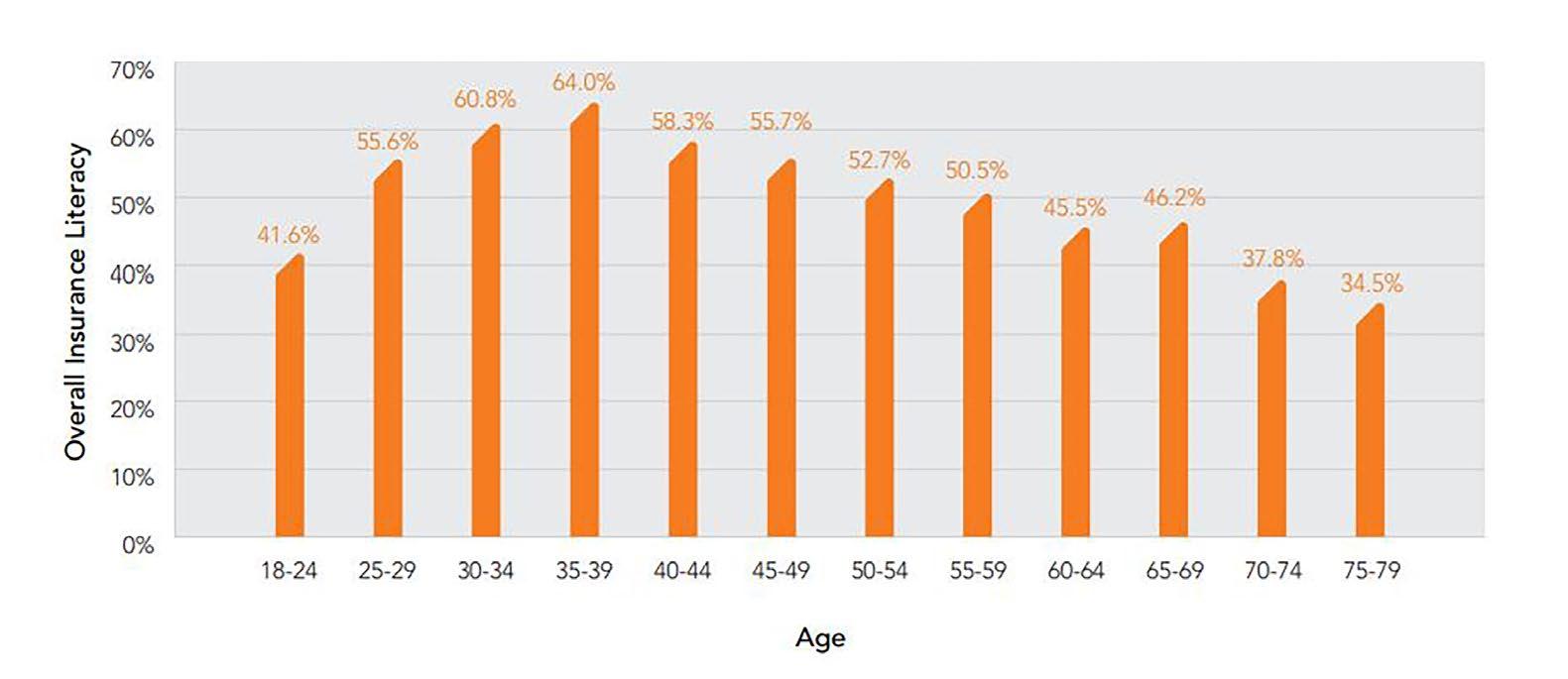
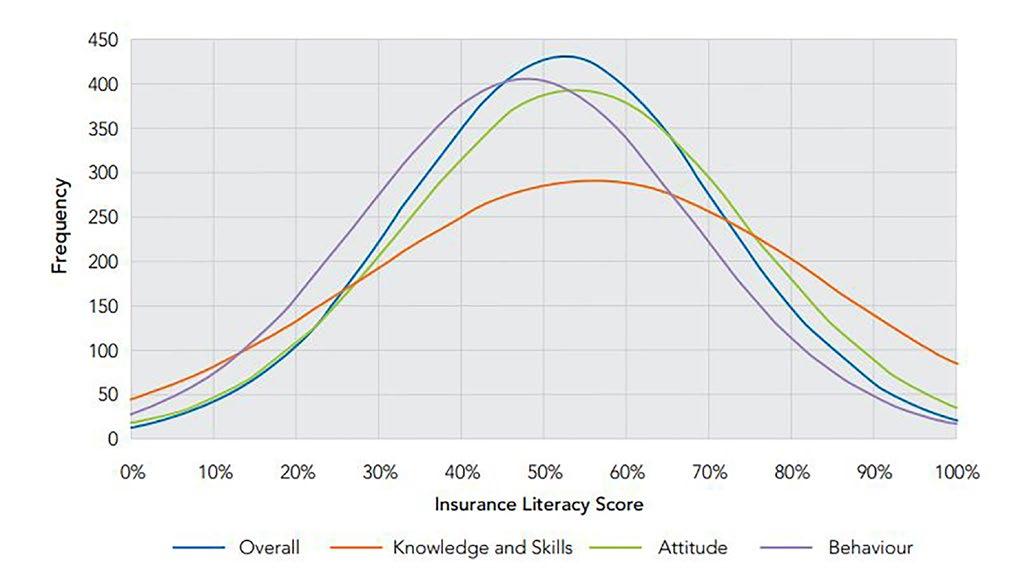
Income is also positively correlated to insurance literacy as the higher one's income is, the higher the literacy rate. The literacy score of respondents with a monthly income level below HK$10k is 41%, whilst those earning HK$100k or above score 80%. The report also found that insurance literacy is correlated to educational level. For respondents who graduated only from primary schools, their insurance literacy score was below 35% whilst those who graduated from tertiary education or above scored 63%.
Similar results
Talking to the Asian Business Review, Danny Lee, Chief Product Officer at Manulife Hong Kong and Macau said the key findings of the IA’s study mirror a study they did in February

which revealed that most Hong Kong taxpayers do not still do not fully understand the characteristics and benefits of tax-deductible products.
Manulife Hong Kong and Macau's survey asked Hong Kong taxpayers about their knowledge of a trio of tax-deductible solutions: Voluntary Health Insurance Scheme (VHIS), Qualifying Deferred Annuity Policies (QDAP), and Tax Deductible Voluntary Contributions (TVC) under Mandatory Provident Fund (MPF) schemes.
“Respondents on average answered just four out of fifteen questions correctly. With an increasing variety of products in the market, we would advise people to take the time and effort needed to educate themselves on these solutions so they can better understand their options and plan ahead,” Danny said.
Literacy and attitude towards insurance in the next decade Danny also stressed that it is important to seek professional advice from financial advisors who have the knowledge and experience to help customers create a suitable insurance portfolio based on their needs.
This survey by Manulife is also how they, as a major insurer in Hong Kong are striving to educate the public about the risks of being unprepared for future health and financial challenges.
“Hong Kong is one of the most sophisticated insurance markets in the world. IA’s finding means that some Hong Kongers are failing to make good use of the diversified products available in the market to achieve sufficient risk protection planning. Protection planning is an important part of one’s financial planning, particularly in a place like Hong Kong where the cost of living and medical expenses are relatively high. Life and medical insurance can help to close the protection gap. It is crucial to act early and make good use of a wide range of insurance solutions to hedge the risk exposure,” Danny said.
“The pandemic has increased the number of people in Hong Kong adopting healthier lifestyle habits and boosted awareness of health and financial protection, which we believe will raise the level of literacy and overall positive attitude over the next decade,” he added.
THE ASIAN BUSINESS REVIEW 19
The pandemic has boosted awareness of health and financial protection, which will raise the level of literacy
Danny Lee
Overall insurance literacy by age
Source: Hong Kong Insurance Authority
How brick-and-mortar stores can revamp customer experience by going ‘phygital’
Consumers are increasingly demanding more exciting in-store experience.
Dark stores
Another strategy retailers are using is called the dark stores. Despite the name, it can illuminate brick-and-mortar stores’ creativity. Dark stores are like distribution hubs of physical stores, said Sharma. These physical stores turned into dark stores, which are not open to customers but are used as store inventory and for brands to send out orders.
Online grocery store, HappyFresh, increased its dark stores in Singapore to allow an efficient shopping experience, bringing high-quality products to customers.
Since its launch, the online grocery’s users increased by 300%, month-on-month, to address growing demand.
BNPL schemes
To gather and use data analysis and insights, retailers should utilise video-powered retail
When borders reopened and travelling was revived, businesses figured that they needed to revive their physical stores—but they must be different from the pre-pandemic times. In a 2022 Singapore Retail Report study, consumers said that they now demand excitement and pleasure from their instore experience, because if they cannot get that, they would rather buy online.
According to Varun Sharma, Vice President of the unified CX platform , Emplifi, in the Asia Pacific and Japan, one way for retailers to create this excitement is to be “phygital.” They need to mix physical and digital strategies for a unified experience for consumers using digital datadriven customer insights and technologies.
To gather and use data analysis and insights, Sharma suggested utilising video-powered retail that involves video software that uses data to connect callers to an in-store expert to handle their queries.
“Video technology helps humanise digital communication between consumers and brands via their website—leveraging data insights such as how, when, and why customers are interacting,” he explained.
For example, Marks & Spencer has a “call the expert” video button, enabling their experts to pair with customers for a stronger chance of a sale. This live video service accommodated 28,000 one-on-one consultations of customers browsing furniture, menswear, and lingerie in the store, according to Marks & Spencer’s statement on 28 January 2022.
“This helps brands understand the customer journey better and provide a more personalised experience. With customer data, retailers can give shoppers exactly what they are looking for, boosting their sales potential, and cutting costs, too,” Sharma explained.
The Buy Now, Pay Later (BNPL) schemes also received popularity in Singapore from 2020 to 2021 due to convenience and prudent economic climate, Quan Yao Peh, a Senior Research Analyst at Euromonitor International, said.
Based on Euromonitor’s 2021 data, credit cards account for 61% of personal transactions.
“BNPL has been positioned as increasing the immediate affordability of goods and services, whilst allowing customers greater repayment flexibility compared to one-off spending,” Quan Yao said in an interview with the Asian Business Review
To avoid turning BNPL to buy now, don’t pay later, businesses should consider the profile of their consumers.
“A millennial and Generation Z, someone who has just started working, is perhaps still in university and may not have that much disposable income at this point. The retailer needs to consider whether or not the BNPL implementation will allow them to better reach and capture the wallets of their target consumer,” said Quan Yao.

An example of a brand adopting BNPL is clothing brand, Pomelo’s, partnership with Atome, a BNPL mobile app, to allow customers to pay one-third of the total bill first. After their check out of items, their orders will be shipped and customers will get the items and pay other payments later with zero interest, 30 days apart.
Pomelo is currently operating three physical stores in Singapore which are in Nex, Jem, and 313@Somerset.
Cashier-less checkouts, AR zones
Smart technology can also create seamless experiences for customers when they visit physical stores such as through cashier-less checkouts, voice-activated instore robotic assistants, dynamic merchandising tools, and shelf-monitoring solutions, explained Guillaume Sachet, Partner of Advisory Practice at KPMG, a professional services firm.
He added that these technologies can combat consumers’ frustrations such as long queues, insufficient stock of popular products, and navigating physical stores. A brand that does this is Singapore’s Pick&GO, an AI
20 THE ASIAN BUSINESS REVIEW
RETAIL
Video technology helps humanise digital communication between consumers and brand
SINGAPORE
convenience store, which resorted to AI technology to help customers walk and complete their payments in a matter of seconds.
Quan Yao said these cashier-less options are better suited for grocery retailers, which focus on convenience. It could be different for other retailers such as department stores and beauty specialists that need human expertise to entertain customer concerns.
KPMG expert Sachet also suggested AR zones within stores to elevate customers’ interactivity with products that may be on static display.
In JLL’s 2022 Singapore retail property report, furniture retailer, Castlery, established an AR-enabled store that featured modern living spaces via mobile applications. This helped customers visualise the furniture in their homes and improved customer experience at physical stores.
Since 2019, Castlery’s posted a six-fold increase in its revenue. Further, its modern pieces were sold in 300,000 houses globally.
Mitigating inflationary pressures
Brick-and-mortar stores must also leverage customer experience as Singaporean consumers are bearing the brunt of rising inflation, which changes their way of spending.
These factors should push physical retail stores to “make adjustments” which will attract customers and generate sales, Sachet said.
Retailers can consider introducing or stepping up experiential components for shoppers. For grocery and food and beverage retailers, this could be in the form of sampling stations, self-serve bars, and demonstration stations. For clothing and apparel brands, leveraging AR to enable virtual product trials can refresh the experience whilst decreasing the hassle of physically trying on products, Sachet said.
“More than just a platform for showcasing products, physical stores are a community hub, which allows connections to be built between brand and customer,” the KPMG expert added.

Consumers are bound to spend more consciously with the rising inflation. In fact, a DBS survey showed that 42% of consumers said they will save more and spend less whilst 32% will look for cheaper alternatives.
“Retailers need to make the most of their brick-andmortar assets. One of the ways to do so is by integrating the ‘phygital’ concept as consumers turn into hybrid shoppers,” said Emplifi’s Sharma.
Sharma said businesses should tap omnichannel retailing, which allows customers to receive a unified experience of shopping through a mobile device, computer, or at a physical store.

This is due to the evolving demands of shoppers, who 67% of them in the Asia Pacific seek new products in-store whilst 66% seek new products on their mobile phones, as shown in Meta’s Seasonal Holidays Report.
“Setting up an omnichannel buying journey is no longer a nice to have option for businesses. Customers now want the flexibility to choose which channel suits them at a particular moment and expect to be able to contact businesses via multiple touchpoints,” said Sharma.
Consumers’ flexibility is also shown in Adyen’s 2022 Retail Report which found that 61% of consumers said
they will be more loyal to a business that allows buying things online and returning in-store.
One way to do this omnichannel approach is to elevate the customer experience by speaking to a live customer service agent on social media, logging an order online, and heading to the physical store to get the product.
UK cycle retailer, Ribble Cycles, does this by partnering with Emplifi Shopstream by Go Instore, which is a oneto-many video-streaming service. This service will allow customers access to a Ribble physical store, a Ribble expert, and its range of products online.
When live events were cancelled during the pandemic, Ribble used ShopStream to feature new products. The broadcast on their website, which was also live streamed on Facebook and Youtube, reached 10 times more attendees than launching these new products on a personal event.
One in four engaged visitors add products to their basket during a live stream on Emplifi’s ShopStream, with purchase rates rising to as much as 50% when moving to a one-on-one discussion with an associate.
Locally, an omnichannel approach is being done by Singapore Airlines (SIA) which uses the KrisShop offering, which allows customers to buy from the brand’s website or mobile app.
“Products on sale range from cosmetics to fragrance and electronics, and items can be delivered to the customer’s seat on their next SIA flight or directly to their doorstep in any part of the world,” said Sharma.
Sportswear firm, Decathlon Singapore’s omnichannel approach is Click and Collect, which uses its e-commerce and retail stores.
Through this setup, customers can purchase goods online and collect them at the nearest brick-and-mortar stores within two hours but only for general goods. For items like bikes, they can be collected within seven days.
Using retail technologies is also one of the strategies for brick-and-mortar stores, Quan Yao said.

He cited electrical and furniture retailer, Courts Singapore, as an example of this marketing strategy after the store set up quick response codes that activate a virtual mascot, Bitty the Mascot, which will help in virtual shopping.
“Generally, we see key themes around meeting consumers’ demands for product availability and a positive experience in-store trying the product. Stores should also be strategically located and easily accessible to their target consumer,” said Quan Yao.

THE ASIAN BUSINESS REVIEW 21 RETAIL
Varun Sharma
Quan Yao Peh
Guillaume Sachet
Customers now expect to be able to contact businesses via multiple touchpoints
Fintech funding slows as COVID’s digital hype fades
Valuations of technology stocks, both public and private, are down 60%.
Fintech funding hit a record number of volumes in 2021, with 5,684 fintech deals for a whopping US$210b in total investments garnered during the year–the second highest annual total ever, according to data from KPMG. Yet come a year later and the global fintech investment market is in a downward trend. Global fintech funding fell 33% quarter-overquarter to hit $20.4b — its lowest level since Q4 2020, CB Insights revealed in a report.
The APAC region was not spared, where apart from a few certain markets, the fintech sector saw investments funneled towards them shrink in the first half of 2022.
This is not just a fintech problem, analysts told the Asian Business Review. The volatile stock and investment market situation has pushed investors to take flight to the sidelines and keep their monies close at the moment. Fintechs were not spared from the cautiousness.
“There’s been a consistent declining trend in 2022 across IPOs, SPACs and M&A transactions, not only fintech funding. Investors bearing losses from stock market valuations will become more selective in making new investments,” Tzu-Chung Liang, Southeast Asia Financial Services Strategy and Transaction Leader at EY, told the Asian Business Review in an interview.
In particular, the rising interest rates and renewed fears of a recession encouraged investors to focus first on business fundamentals and exercise more caution on where they sink their funds into, explained Anton Ruddenklau, Partner and Global Head of Fintech, KPMG International.
“Rising interest rates to combat inflation has added to the cost of capital and therefore the required return on that capital. This has sharpened investor resolve to target fintech firms that are more structurally profitable, are at a later
stage in the funding journey or that have demonstrated operational profitability post scaling,” Ruddenklau noted. Ruddenklau noted that the digital hype that rose during the COVID years have faded, which is also currently driving down valuations of technology stocks by up to 60% lower.

“Again, this has resulted in investors looking for differentiated technology business models, investing in the next generation of sectoral change or focusing on firms with a clear path to profitability. Unicorn minting has stilted as investors take a more sanguine rather than speculative view of the business fundamentals of fintech firms,” Ruddenklau explained.
Going up
The good news is that the dismal state of funding will likely not last, according to analysts.
“Interest in fintechs in the APAC region remains strong, especially those targeting growth markets such as China and Southeast Asia,” Liang said. Ruddenklau also forecast that funding will grow as financial technology innovation ramps up over the next 7 years.
“Based on the addressable market, we nonetheless forecast financial technology innovation growth to increase over the next 7 years, with
22 THE ASIAN BUSINESS REVIEW
FINTECH
The volatile stock and investment market situation has pushed investors to take flight to the sidelines
ASIA PACIFIC
There’s been a consistent declining trend in 2022 across IPOs, SPACs and M&A transactions, not only fintech funding
the market tripling in size by 2030 – circa $600b annualised funding,” Ruddenklau said.

In particular, Ruddenklau identified three waves of innovation that will sweep through the financial services sector: embedded finance, AI-enabled advice and complex brokerage, and the transformation of risk taking and balance sheet-based manufacturing. On the other hand, investors will likely become more selective with higher interest rates unlikely to abate in the near future, Liang said.

Connectivity
Connectivity will be a central theme in the future of banking and finance, bringing investment potential that investors will surely not be able to resist long-term.
In fact, although funding has dipped in 2022 compared to the past year, there are fintech sectors–and markets– who are being positively impacted by the recent market correction, as well as their position as “the next wave of digitisation,” now that COVID has marked the “closure” of the first round of digitisation.
“It would be fair to say that COVID capped off the last ten years of digitisation of financial services with a significant focus on connectivity – this included digital payments, mobile channels, open data and the first wave of blockchain,” Ruddenklau said.
“This year, we have seen several fintech sectors positively impacted by the recent market correction. These sectors are very much aligned to the
next wave of digitisation and include Climate & Carbon, Physical Supply Chain, Agribusiness, Regtech, AI, Crypto infrastructure and Crypto Risk software,” he noted.
Outliers
Whilst most markets are on a downward trend, some countries in APAC actually managed to remain relatively stable: Singapore and Indonesia, analysts said.
“Singapore is holding its position well. As the trusted hub for high growth and rapidly digitising Asian markets, the diligence in developing an open, cross-border ecosystem is paying dividends,” Ruddenklau said.
Singapore reported “robust” fintech funding results in the first six months of 2022. This is mostly thanks to receiving a boost in its cryptocurrency funding, according to Ruddenklau.
“Both fintechs and investors looking to Southeast Asia’s growth opportunities will likely look at Singapore first, being the strategic entry point. Many start-ups that are headquartered in Singapore have key markets in Southeast Asian countries,” he added.
In a separate report, KPMG said that Singapore even doubled its global market share by deal value to 6.4% in Q2 from just 3.1% in the whole year of 2021. Its share in the number of deals globally also went up to 5.1% from 3.4%.
The country’s deal sizes have likewise grown up to 10% to average US$43.9m in Q2 22 from US$39.8m across FY2021. Neighbouring
Indonesia also bucked the global trend to hit a record-high investment value in the first half of the year.
According to a report by information services provider
Fintech Global, investment value in Indonesia in January to June 2022 has already surpassed the previous year, with US$1.8b reported across 51 deals in 2022. In comparison, US$1.6b investments were received by Indonesian fintechs for the full year of 2021.
For the full year, Indonesia’s fintech investments is expected to reach US$3.6b, whilst deal activity in the country is expected to increase slightly by 5% reaching 102 deals in 2022.
Consolidation in the cards
But even operating in a market as stable as Singapore, some fintechs just are not meant to last, analysts told the Asian Business Review.
“There are over 1000 fintech firms based in Singapore, representing over two thirds of the ASEAN fintech market. Many are too subscale to be commercially viable in the short or medium term,” Ruddenklau said.
“Equally, investors are focusing less on funding start-up phase businesses and more on supporting their later stage investments. Between the start up funding squeeze and loss-making scale up firms, acquisitions will be highly attractive,” he added.
KPMG International now anticipates consolidation to be concentrated in the last wave of fintechs – those focused on bankfintech relationships.
“Some fintechs will invariably be left to fail – particularly zombie crypto firms – and others will be acquired by legacy institutions to support their innovation agendas,” Ruddenklau noted.
Liang echoed this sentiment, adding that current financial services players will be the ones to snap up fintechs with offerings that compliment their current digital services.
“Incumbent financial services players and ecosystem players may have the opportunity to start acquiring fintechs for new technology to complement existing products and improve user experience, whilst valuations are more amicable now,” Liang said.

THE ASIAN BUSINESS REVIEW 23 FINTECH
COVID capped off the last 10 years of digitisation of financial services with a significant focus on connectivity
Investors are focusing less on funding start-up phase businesses and more on supporting their later stage investments
Anton Ruddenklau
Tzu-Chung Liang
How to stay ahead of SMEs’ financial needs
ANEXT Bank’s CEO talks about why digital banks are the key to this challenge.
Toh Su Mei recalls a time during the early days of her career when a former colleague made a data entry mistake in the bank record of a small and medium-sized enterprise (SME).
“That seemingly small mistake ended up affecting the SME’s request and access to a credit line to fund his business operations. That was when I realised banking was more than just a job for me,” Toh, CEO of ANEXT Bank, told the Asian Business Review
Prior to that, banking just seemed the natural course of action given Toh’s education background, saying that she “stumbled” into the industry after graduating with a major in Economics. But moments such as this cemented to Toh how critical their role is to small and medium enterprises.
“I’ve not looked back since my first experience where I witnessed first-hand how the right financing solution and quality of banking services could make or break a business. And for small and medium enterprises, this was even more apparent,” she said. It became more than just banking to Toh. “It was an opportunity for me to make an actual difference – it’s not about financing a business, but a person’s livelihood and aspirations. Constantly and actively listening to customers is key, and I enjoy the deep relationships built with my customers in this process. If I somehow had to choose my first job again, I’d pick banking and do it all over again!” the CEO explained.
Decades later, Toh is now Chief Executive Officer of ANEXT Bank, one of the newest digital-only banks granted a license to operate by the Monetary Authority of Singapore (MAS), with over two decades of serving SMEs both in Singapore and across the region. Prior to her new role, Toh was regional head, SME loan product management & alternative lending for DBS Bank.
It was a role that prepared Toh to lead one of the country’s most anticipated virtual banks, and she has incidences like the one she shared earlier in mind as she and her team took advantage of their structure as a digital-only bank to find ways to better service SMEs.
“[A] key differentiating factor for digital banking is the ability to ensure a consistent service and operating model at scale versus say a RM-led [relationship manager] approach where incidents like what I shared earlier, will be far and few,” the ANEXT Bank CEO shared.
You made the jump from being a head in a traditional bank to becoming the chief executive of a digital-only bank. So far what has been the difference? Tell us about your leadership style. What kind of work culture do you cultivate as the CEO of ANEXT Bank?
Traditional bank or digital bank, I believe that for it to be successful, its people have to be passionate and obsessed
with the desire to understand and serve customers. That’s why for us, having the right people and culture is the most fundamentally important part of setting up the business. I strongly believe that with the right people, you can achieve anything as one team.
Our local team is formed by people that are passionate, driven and leaders of their own fields. Over 90% of our staff at ANEXT Bank are local hires, [and] they bring with them a range of industry experiences from banking, fintech to technology. The average working experience of the team is more than 15 years.

I’m also an advocate of an open and transparent company culture, people are encouraged to speak of their minds freely, take ownerships and collaborate.
Why does the banking sector still find it hard to meet the financial needs of SMEs in Asia?
There is no lack of trying by the banking sector for sure. The challenge is that the needs of SMEs today are changing rapidly - the markets they operate in, the business models they adopt and the financial needs they have are much more diverse each day. As a digital bank, we are looking to tackle these diverse needs by providing financial services at scale – for example, providing more accessible and effortless financial services to SMEs of all sizes, and not just to the bigger boys.
24 THE ASIAN BUSINESS REVIEW CEO INTERVIEW
There is no lack of trying by the banking sector. The challenge is the rapidly changing needs of SMEs
SINGAPORE
It became more than just banking – it was an opportunity to make an actual difference (Photo: Toh Su Mei, CEO, ANEXT Bank)
As business models evolve towards a hybrid and digitalfirst model, so should financial services. According to a Deloitte research, small businesses account for more than 85% of cross-border e-commerce market in the Asia Pacific region. And that’s just one segment of the “unserved and underserved” SME community that ANEXT Bank is looking to serve. Essentially, SMEs who have pivoted their business models to a hybrid and digital-first one, and for whom we’re anticipating and serving their financing needs through embedded financing – basically enabling access from where they’re doing their businesses digitally.
I also believe that there is room for the traditional banks to collaborate with fintechs and digital banks. Together, the industry can complement each other and truly provide diverse services to SMEs across their growth journey.
As head of SME banking in past banks, what have you and your team(s) done to solve the financing gaps of SMEs–and how do you plan to bring these solutions and services to the next level as the leader of ANEXT Bank?
First of all, we truly live our mission of “providing innovative, accessible and effortless banking services” in our product design. We want to make banking an easy and rewarding experience for SMEs, because we know business owners have no time to “operate bank accounts” and spend time to figure out cross-border FX, interest rates, amongst others.
It was with this mindset that we launched the ANEXT Business Account – a no frills business account that did not require fees to start nor maintain so as to help defray operating costs. We enabled remote onboarding which meant an SME abroad did not literally have to go all the way to open an account, and we’re seeing a lot of foreign business owners take advantage of this feature, which in turn motivated the team to dive deeper into the needs of the different SME personas so as to push out even more relevant features. Our next priority is to innovate together with partners. Adopting an open and collaborative approach, we believe in joining hands with industry partners and public
sector agencies. By leveraging on each partner’s unique position, knowledge and subject matter experts, we are able to tackle industry pain points at scale.
What are your goals as leader of ANEXT Bank?
Both business goals and people goals are important to me. On the business side, our goal is to truly deliver on our promise, that is to bring about what’s next in financial services and provide micro and small businesses digital financial services that are innovative, accessible and effortless to enable them to succeed in business. On the people side, I’d like to build the right culture to allow everyone to excel and shine in their job roles.
What three things have you learned from your experiences that shaped you as a banker?
First, know your customers. This is fundamental and the first step to getting things right. Stay focused on the long term: It’s easier to go from 0 to 1, than to go from 1 to infinity. Although I’ve said that launching ANEXT Bank is the most memorable moment so far on this journey, I know it’s just the start. The focus now is on building a scalable, sustainable and customer-centred business model for the bank. Remember that there are humans behind the technology: A passionate team who truly cares about the customers defines the quality of products and services, and defines who we are as a bank.
What are the biggest challenges in building a neobank from the ground up, and how did you and ANEXT Bank overcome these challenges so far?
The biggest challenge was really in attracting and building a team of like-minded people that’s driven and passionate in enabling effortless access to financial services for SMEs.
To reimagine business banking and how it should be, we needed to have diverse talent that could look at things from a different perspective to solve the needs of our customers, and we were fortunate that many believed in our mission and values to join us in our journey to being Singapore’s newest digital wholesale bank.

We believe that in pushing boundaries to bring about what’s next in financial services as a team, it will also help support the local talent development as we work with all participants in the financial services industry to raise the bar for the sector. Together, we can cement Singapore’s reputation as a leading fintech and innovation hub.

THE ASIAN BUSINESS REVIEW 25
CEO INTERVIEW
There is room for the traditional banks to collaborate with fintechs and digital banks
ANEXT Bank with Sopnendu Mohanty of MAS at the digital-only bank’s soft launch event
Toh Su Mei during the digital-only bank’s soft launch (Photo from ANEXT Bank)
Tourists now prefer ‘less
adventurous’ itineraries
Most travellers are looking to “reconnect” with their family and friends post-lockdowns.
Territories across the globe may have reopened their borders, but luxury tour operator Scott Dunn said 2023 will remain a year of recovery, as tourists proceed with caution in planning their next trips.
“Guests are still being very mindful of when they travel, how they travel, and what they’re travelling for,” Scott Dunn General Manager Mike Harlow said.
Harlow observed most travellers are looking to “reconnect” with their family and friends. Some travellers, meanwhile, are planning to study or work overseas, such as in Europe and the United States.
“Guests want to continue to return to familiar destinations, so we’re seeing fewer bucket list trips, and less adventurous travel in the year ahead,” Harlow said.
“We’re already getting ready for a strong desire to get more adventurous into 2023,” the Scott Dunn general manager added. In Singapore, particularly, guests are taking advantage of short breaks by travelling to places like Thailand, Vietnam, and Cambodia.

Travellers are expecting to have more flexibility given the constantly changing border restrictions and requirements in entering certain territories. This could be through offers that give more room to adjust dates or make changes in itineraries. Having detailed and updated information on border requirements would also be key for the industry.
Harlow advised that individuals planning to travel should book sooner than later. “Availability is challenging. If you are looking to travel, then definitely start to think about it sooner rather than later and start to have some conversations with experts and operators that can support you with those arrangements,” he said.
In terms of costs, Harlow said travellers have not faced much fluctuation in the overall cost, besides the charges in getting tests and other COVID-19-related expenses. Travel costs are expected to remain within their 2019 level as suppliers and partners will neither introduce discounts nor inflate costs.
“Unfortunately, I do think that the cost of travel will increase as we go into 2023,” he said.
Where tourists are headed Europe is one of the destinations popular amongst tourists, particularly Spain, Italy, Greece, and Scandinavia. Switzerland and Lapland have also seen strong demand. Regions that implemented the vaccinated travel lane model in the middle of last year towards the end will also see an increased number of travellers.
“Almost just re-engaging and getting familiar with travelling to those destinations again, we’re seeing cultural experiences, historical tours, food, and wine are ever more popular,” Harlow said.
“Guests are travelling slower, spending more time in a destination, and getting to understand the destination in a bit more depth,” Harlow added.
Outside of Europe, Singapore had also been in demand as a long-haul destination. But now, other parts of the Asia-Pacific region, such as Thailand, Sri Lanka, Cambodia, and Australia are also rebounding strongly.
Maldives has also been frequented by tourists at the beginning of 2022, particularly in March and the Easter holiday. This will likely continue, but Harlow said that as the world continues to reopen, travellers will start looking at other destinations, especially those that have a good infrastructure, and medical facilities, as well as an existing network that allows flexibility in their travels.
Getting back in the game
In ensuring it delivers a high-quality experience to its guests, Scott Dunn sends its team members to go on familiarisation trips that could last between two days up to four weeks and experience their services first-hand. The company also works closely with the businesses that provide accommodation.
Scott Dunn has also partnered with the people on the ground, who can keep them up to date on any changes imposed within territories by their respective governments. The firm then summarises this in the form of documentation, or through conversations with guests.
26 THE ASIAN BUSINESS REVIEW INTERVIEW
We’re already getting ready for a strong desire to get more adventurous into 2023
Guests are travelling slower, spending more time in a destination (Photo: Mike Harlow, General Manager, Scott Dunn)
SINGAPORE
Humanising banking experience through a chatbot solution
CIMB Bank Singapore embraces a new way of customer-centric banking – Conversational Banking.

Achatbot is one of the value propositions of conversational banking services that helps enable CIMB Bank Singapore (CIMB) to maximise customer-centricity by making banking as convenient as possible through allowing real-time customer engagement, a concept that CIMB envisioned as “Banking at your Fingertips”. EVA, the bank’s Chatbot, aims to make all that possible.
Traditionally, communications in banking are typically a one-sided affair where the bank attempts to reach out to customers via traditional means such as SMS, EDM, or advertisement. However, such means lack the interactive element, and as such, there’s no real-time engagement with the customer. Additionally, in circumstances where customers do reach out to the bank, there tends to be a long waiting time.
CIMB understands that that can be frustrating so EVA seeks to address the
aforementioned customer pain points to make their banking experience as smooth and as convenient as possible by using AI technology.
Assisting clients with AI
With EVA, CIMB can provide an avenue for customers to have real-time conversations with the bank round the clock, with the recent functions launched including assisting customers to book a branch service appointment and providing ‘live’ exchange rate inquiries by focusing on their diverse individual needs. It also acts as a personal assistant by reminding customers before their appointments. In just a few clicks, customers will now be able to check ‘live’ rates via EVA and secure them instantly. They can easily amend their bookings through EVA by entering their mobile numbers used for the registration earlier. EVA is also able to work seamlessly across multiple devices, making it truly
convenient for customers.
CIMB has always put customers first and ensures only relevant information is communicated on demand. Hence, all conversations are specially curated according to the various customer segments.
Within a short period since its rollout, the EVA bot signup rate has increased significantly. Other than a simplified booking process, the cancellation rate was reduced from 40% to 2% due to the ease of appointment bookings and reminders. All of these have translated to higher productivity at the branch by 30%.
Head of Consumer Banking and Digital, Ms Merlyn Tsai shared that the Bank has in place a full-fledged digital roadmap for new solutions to make the banking experience more convenient for customers. As the technology continues to improve, it becomes more feasible for more used cases for EVA.
This effective solution caught the attention of the Asian Experience Awards, with the Singapore Branch of CIMB Bank Berhad winning the Singapore Digital Experience of the Year - Banking award.
The prestigious awards programme aims to highlight the ingenious initiatives of creative companies delivering meaningful brand experiences to their stakeholders.

SINGAPORE DIGITAL EXPERIENCE OF THE YEAR - BANKING F O R W A R D To g et h e r CIMB Bank Berhad (13491-P)
Asian Experience Awards 2022 for Singapore Digital Experience of the Year Banking for our CIMB EVA Chatbot Booking System
We are proud that our award-winning EVA chatbot system has clinched the Singapore Digital Experience Of the Year at the Asian Experience Awards 2022.
POWER
Southeast Asia’s nuclear energy ambitions dashed by public opinion
As of 2023, there are 422 operable nuclear power reactors in the world, but none from SEA.
After the nuclear disasters at Chernobyl in Russia and Fukushima Daiichi in Japan, nuclear power has had a negative lasting impact on public perception. Whilst some regions have been able to revive the use of nuclear energy, Southeast Asia has yet to see its first operational nuclear power plant (NPP).
“The case for Southeast Asia nations, amongst the challenges, is addressing misperceptions and misrepresentations to strengthen the public acceptance and social license for the reliable, safe, lowcarbon energy source,” Beni Suryadi, Manager, Policy Research and Analytics, ASEAN Centre for Energy, told the Asian Business Review
“There are technical answers to outstanding issues like nuclear waste disposal, but it has taken very difficult traction in the public due to continuous misinformation coming from Hollywood movies and extreme non-government organisations,”
Dr. Carlo Arcilla, Director of the Philippine Nuclear Research Institute (PNRI) explained.
The Philippines is amongst the countries in Southeast Asia with a significantly advanced nuclear power development plan. It is currently exploring plans to revive the mothballed Bataan Nuclear Power Plant, which has two units of 600 Megawatts electric (MWe). It is also considering the development of small modular reactors (SMR).
Aside from the Philippines, countries like Indonesia, Vietnam, and Thailand have also explored the nuclear energy source. According to the World Nuclear Association, Indonesia eyes larger units, but plans have so far been postponed and are projected to be deployed in 2045. Vietnam and Thailand’s plans meanwhile are either delayed or pending commitment.

Other Southeast Asian countries have also expressed interest or started exploring plans to develop nuclear, but to date, nuclear power
On the government level, awareness of the benefits of nuclear energy is still unequal
remains on the drawing board.
“A glimpse of hope to witness nuclear deployment in ASEAN has come to light as all ASEAN countries have set energy-climate commitments that require ASEAN to be carbon neutral by 2050-2060,” Suryadi said.


“Consequently, as the region that still has a heavy reliance on coal, ASEAN nations will see pathways to carbon neutrality in the next decade by slowly phasing out coal and replacing it with renewable and alternative energy, one of which is nuclear energy.”
Nuclear power can be seen as a cost-effective alternative to coal due to its technical similarity with coal-fired power plants. Likewise, NPPs have the ability to maintain the generating capacity and ensure continued baseload capacities to meet the growing demands whilst switching to low-carbon electricity, Suryadi said.
Arcilla also noted that the initial high cost of developing nuclear power plants has been mitigated by South Korea’s construction of four brand new, large NPPs in the UAE, and China’s construction of three NPPs in Pakistan.
Improving transparency
To help debunk misperceptions about nuclear power, Arcilla suggests improving transparency which governments can now execute
through social media campaigns, through which they could highlight decades-old advantages of nuclear.
Similarly, Suryadi said ASEAN leaders need to clearly relay scientific facts, such as solid safety records of NPPS despite a history of severe accidents, considering a new generation of power reactor technologies is now available.
ASEAN leaders also need to engage the public and stakeholders, such as policy decision-makers, and civil society. They must be able to address concerns relating to nuclear power safety and radioactive waste. On top of this, the nuclear industry, ASEAN governments, and financial institutions need to come together to bring the capital costs of building NPPs lower whilst also shortening construction time.
“On the government level, awareness of the benefits of nuclear energy is still unequal, as well as the safety concerns often raised when dealing with all kinds of nuclear use,” Suryadi said.
“Even with significant research having been done, facts are not being disseminated effectively to make nuclear a viable choice for future capacity planning yet.”
On the other hand, whilst public support varies across countries, sentiments are generally positive when nuclear deployment is linked
28 THE ASIAN BUSINESS REVIEW
SOUTHEAST ASIA
There are technical answers to outstanding issues like nuclear waste disposal, but it has taken very difficult traction in the public due to continuous misinformation (Photo: Bataan Nuclear Power Plant, Philippines)
Dr. Carlo Arcilla
Beni Suryadi
to climate change prevention. There could be a stronger and more widespread positive perception of nuclear deployment if its promotion is backed by governments’ transparency.
“Communicating nuclear safety in risk-communication, mythbusting, and discussion on nuclear benefits is necessary to build public trust in nuclear technology. The public must also be assured that the building of future nuclear infrastructure would be done in an environmentally and sociologically conscious manner,” Suryadi said.

Chan Kung, founder of independent think tank ANBOUND, likewise raised the need to include

the public in the decision-making process and not solely operate based on just a business model.
“I advocate that the investment planning of nuclear power plants should be open and transparent. As the most important asset with long-term impact in a region or city, it is very important whether the long-term risk can be covered in investment planning,” Chan said.
“The actual nuclear energy risk is not static. With the aging of equipment, the risk of nuclear energy will be magnified rather than reduced.”
He also noted the bigger role the nuclear safety industry can play
today, compared to just being a subsidiary sector, as it can function as an independent third-party industry in certain cases to ensure nuclear safety is regulated.
Making nuclear safer
There is no absolute safety in nuclear energy, Chan said; but countries can achieve relative security. Achieving this concerns more than just technical risk factors, but also various unmeasurable natural risk factors.
Beyond just assuring the public, governments can also consider several factors to ensure it is safe, such as its geographic location. Plants need to be constructed in areas that are not prone to earthquakes, tsunami, and volcanic activity–all common occurrences in Southeast Asia which sits right in the Pacific ring of fire. NPPs need to be placed in a remote location to keep a distance between nuclear waste and radiation, and the public.
As for nuclear waste disposal, Chan said there may be a need for an international cooperation mechanism.
Your Gateway to the Saudi Market
Saber is a platform under the Saudi Standard’s supervision, that connects businesses with accredited conformity bodies authorized to issue certificates of conformity before entering the Saudi market.

Saber Achievements:
+4 Million Products Registration
Collaboration with +10 Governmental Bodies
Enhancing the Kingdom's Cross-Border Trade by 72 Ranks
+92 Conformity Bodies Collaboration
POWER
It could be a true game changer because about-to-bedecommissioned coal power plants will have a new lease on life
Chan Kung
For More Please Visit
The renewal, replacement, and upgrade of nuclear technology are key measures to ensure nuclear safety (Photo: Bataan Nuclear Power Plant, Philippines)
Time for businesses to ditch Wi-Fi and switch to 5G
A private 5G network can provide coverage in spaces with metal obstructions, unlike Wi-Fi.
When businesses rely on Wi-Fi, they are at risk of not being able to make fast and accurate decisions in critical situations given its higher latency, meaning data is transferred and received slower than other types of connection. This risk can be eliminated if companies adopt a private 5G connection.
According to John Lombard, CEO, Asia Pacific, NTT Ltd., a private 5G network allows for loads of information or data from different IoT devices to be “collected at the edge” or be processed in real-time—a feature which they said a Wi-Fi network is “not cut” to do.

“It’s ultra-high bandwidth, super-low latency, and really ensuring that decisions can be made at the edge in realtime,” Lombard told the Asian Business Review.
Given that a private 5G network allows for real-time processing of data and thus faster decision-making, adopting such technology can make “any organisation more competitive and invite multiple opportunities to their business,” said Lombard.
“The success and savings derived from these benefits will then ripple out to the rest of the organisation, all the way to the customer,” Lombard added.
Another feature of a private 5G that is sought after by businesses is network security, which seven in 10 executives surveyed by research and insight provider, Economist Impact, said is not being provided by current connectivity and communications platforms.
Economist Impact added that a private 5G network can also provide “coverage in strategic locations, both indoors or outdoors, such as at manufacturing plants or ports” as well as “spaces with metal obstructions.”
“In contrast with relying on public mobile networks, access is limited to authorised devices, which not only allows for improved security standards but also limits network saturation, benefitting performance and reliability,” added the company.
Reaping the benefits
For companies to reap the benefits of a private 5G network, Lombard said they should undergo a mindset shift and be really “eager” to adopt new solutions.
Lombard cited that several companies are still adamant to adopt a private 5G network given challenges such as infrastructure complexity and lack of technical skills and expertise available to deploy the technology.
For 44% of businesses, the main challenge in implementing a private 5G network is how to integrate it with their legacy systems and networks.
These barriers, however, can easily be overcome by
Private 5G ensures that decisions can be made at the edge in real-time
using system integration services when engaging with suppliers and “by outsourcing to a full suite service provider like NTT to implement and manage solutions,” according to Lombard.
According to Economist Impact, businesses also prefer outsourcing a private network from a managed service provider over adopting their own. NTT has a private 5G network-as-a-service platform, which enables businesses to build their own 5G network with full control and data ownership across large coverage areas. Its global connectivity solution also includes SIM and digital sim or eSIM support, carrier management and a global service delivery platform.
“We easily yet securely integrate private 5G into corporate networks and scale businesses with Networkas-a-Service and Device-as-a-Service capabilities with secure access to private apps using zero-trust network access and a Secure Access Service Edge framework,” Lombard said, adding that these solutions will be needed by companies if they wish to provide their workforce with a safe and reliable network.
30 THE ASIAN BUSINESS REVIEW CEO INTERVIEW
SINGAPORE
Private 5G network allows for real-time processing of data and thus faster decision-making (Photo: John Lombard, CEO, Asia Pacific, NTT Ltd)
Private 5G in different industries
To better illustrate how private 5G works, Lombard shared how it helps companies in the manufacturing/ automotive, healthcare, energy, and retail, which were amongst the most inclined industries to adopt the technology as per Economist Impact’s report.
In the manufacturing/automotive industry, what a private 5G network provides is effective communication between humans and machines.
“In an industry that relies on precise control and data prioritisation, businesses need a network that delivers and supports both connected and autonomous technologies,” Lombard said.
Amongst scenarios where a private 5G would be applicable include augmented reality driving experience, cloud-based control of autonomous transport systems, advanced driverassistance and monitoring systems, etc.
In the energy industry, Lombard said private 5G is “particularly useful” for functions which require low latency networks such as monitoring and managing field devices remotely, and automated routing of power/energy.

A private 5G is not only for complex scenarios such as those in the manufacturing and energy industries.

According to Lombard, it can also help in simple situations such as ensuring a secure exchange of patient’s details, medical history, and test results within a hospital or making the exchange of payments between a seller and consumer faster.
With these opportunities which private 5G networks provide, Lombard believes the adoption of the technology will rise. True enough, over 51% of firms surveyed by Economist Impact said they plan to deploy the network within six to 24 months, whilst 94% believe that it will become a critical part of their operations in the next five years.
“Today, as network perimeters expand, the security capabilities of older connectivity technologies, such as Wi-Fi, are not always optimal. Business leaders need to implement connectivity solutions with improved data privacy, security and faster connection speeds if they’re to provide their workforce with a safe and reliable network,” Lombard said.

bnetconnects
CEO INTERVIEW
Private 5G network provides effective communication between humans and machines
Tradition meets modernity in futureproofing Singapore’s hybrid offices
The new Guoco Midtown features five dimensions of office flexibility.

Work arrangements continuously evolving give rise to the need for flexible spaces. This challenges businesses to determine how much of the traditional office should developers retain or forego in designing a futureproof workspace. GuocoLand struck this balance in the new Guoco Midtown, a 3.2-hectare integrated mixed-use development in Singapore’s Downtown Core. The development will feature more than 700,000 square feet of Grade A office space expected to house an additional 10,000 office workers, residents, and visitors.

GuocoLand Group General Manager (Asset Management) Valerie Wong told the Asian Business Review they tapped into their experience in Guoco Tower, and the tenants’ sentiments in designing a development that caters to flexible space needs. The first phase of Guoco Midtown is expected to be completed by the end of the year. “In our current buildings, Guoco Tower and another building reference, we have a coworking operator that fulfils one level of flexibility, but

we wanted to really be a part of the integrated real estate solution for tenants,” GuocoLand’s Wong said. “We looked at what our tenants requested–they wanted the extra meeting rooms, larger town hall, and MICE facilities for up to 200 persons. We looked at the best of traditional spaces and how this is layered and enhanced with flexible spaces.”
Five dimensions of flexibility
Wong said Guoco Midtown fulfils the need to futureproof offices through five dimensions of office flexibility, particularly Flex in Core, Core to Flex, Flex Connect, Flex Lifestyles, and Flex Cloud. She added this helps ready tenants to make adjustments as needed for scenarios, such as a change in business cycles, or worse, in the case of another pandemic.
Under the Flex in Core dimension, GuocoLand ensured that the property will have highly efficient floorplates that allow tenants to design their office space as an activity-based workplace.
“For office space, it’s all about the efficiency and we built

32 THE ASIAN BUSINESS REVIEW PROPERTY WATCH: GUOCO MIDTOWN
Valerie Wong
Tenants requested extra meeting rooms, larger town hall, and MICE facilities
For office space, it’s all about efficiency
Aside from its green deck, a Sky Garden will sit at the crown of the 192-metre-tall office tower
SINGAPORE
that into the infrastructure – how the core of the building allows tenants to scale up, whether they want to pack 200 persons to 400 persons per floor whilst taking into account fire safety, efficient needs,” she said.
The Core to Flex concept will enable enterprises with their core office based in Guoco Midtown to lease additional dedicated, fitted-out swing spaces. Whilst Flex Connect will allow tenants to tap into a Network Hub annexe building that gives access to service-upon-demand office spaces and meeting facilities.
The Network Hub, spanning 80,00 square feet of space, is directly connected to the office tower. It offers a wide range of amenities, such as lounges, tech-enabled hybrid meeting and training rooms as well as conference facilities that can house up to 200 persons. The Hub also has office pods that have been soundproofed for virtual meetings.
“As a landlord, we have to see when they need to expand, and when they need short-term flexible spaces,” GuocoLand’s Wong said.
“By providing this network hub that offers flexible swing spaces, whether it is just small, for five persons, even up to customised enterprise office, we will allow our tenants to scale up,” she added.

Moreover, Guoco Midtown sought to bring its tenants an immersive work-live-play concept, through its Flex Lifestyle, with a focus on physical and mental wellness. In the Guoco Midtown Gardens, tenants may stroll within a 3.8-hectare landscaped area featuring a collection of 30 private and public gardens with over 350 species of plants.
Guoco Midtown will also have a 40-meter lap pool, a jogging track, and an event plaza that could function as an area for workouts or as an entertainment pavilion. Aside from its green deck, a Sky Garden will sit at the crown of the 192-metre-tall office tower.
On top of the garden and activity areas, Guoco Midtown will feature three retail clusters with an area totalling 50,000 square feet. Two luxury condominiums, the 219-unit Midtown Bay, and the 558-unit Midtown Modern will complete Guoco Midtown’s Flex Lifestyles concept.
Lastly, GuocoLand incorporated its flexibility concept into its IT infrastructure. Through Flex Cloud, Guoco Midtown tenants will be given access to private cloud service on-demand. This could in effect reduce the need for large data centres or server rooms.
Wong said building Guoco Midtown had been challenging as the GuocoLand worked towards catering to the needs of tenants coming from varying industries, such as insurance, life sciences, trading, finance, and even FMCG. But what GuocoLand looked into are the challenges businesses face today, particularly the short business cycles, and the struggle to retain talent.
“They like and appreciate that, as a landlord, we provide for their wellness, with Guoco Midtown’s 40- metre pool and green deck, that would help support their whole wellness and ESG initiatives for tenants,” she said.
“But it’s also very practical because, in a way when they plan their offices, they can literally turn 20% of their space,” she added.

PROPERTY WATCH: GUOCO MIDTOWN
We looked at the best of traditional spaces and enhanced with flexible spaces
New 260-sqm command centre enhances security services with advanced technology

It brings together operational silos to offer 24/7 unified remote monitoring capabilities.
Within the purpose-built AETOS Headquarters at 5 Corporation Drive in Singapore is a 260-squaremetre room with hexagonal-shaped ceiling lights and a 12-metre wide LED screen in the centre of the room. This unassuming space is the AETOS Integrated Command Centre (ICC)—the nerve centre of island-wide operations which houses 13 security operators.

Implementing Singapore’s largest 3D digital twin, the ICC is an agnostic platform that ingests data from unlimited subsystems from multiple premises and beyond borders.


“Our Integrated Command Centre unifies what used to be silo operations to catalyse value for our stakeholders,” said AETOS CEO Alfred Fox
It took over more than a year for AETOS to build the ICC. It was launched in March 2022.
Comfortable operator chairs
To ensure that the AETOS staff remain vigilant and motivated whilst being well-trained, Alfred said they make the command centre a comfortable working environment for its operators by providing gaming chairs.


“Our concept was if a gamer can sit on a chair for hours, such chairs will provide good support for our people as well— and they like it,” said Alfred.
The 36 chairs, customised in collaboration with Singaporebased company, Secretlab, were installed in the new ICC.
34 THE ASIAN BUSINESS REVIEW
Alfred Fox
Hexagonal-shaped lights ensure a well-lit command centre without being too overpowering.
AETOS instals gaming chairs for a comfortable workspace for security operators.
The three-dimensional twin is being used to track sustainability targets.
The LED screen allows efficient remote surveillance of multiple locations.
1 1 3 3 5 5 2 2
4 SPACEWATCH SINGAPORE
Security operators also have their own computers when handling clients.
4

Store it that way on enterprise-class HDDs from 1TB to 22TB1 Your Data Is Gold Customize your business’s storage mix to fit your specific needs with a full portfolio of enterprise-class WD GoldTM HDDs in capacities of 1TB to 22TB1, with OptiNAND TM technology in 20TB and 22TB. These highly reliable solutions for demanding storage environments provide up to 2.5M hours MTBF2. WD Gold HDDs deliver the world-class performance you expect from Western Digital® hard drives. Learn more at westerndigital.com 1 1GB = 1 billion bytes and 1TB = 1 trillion bytes. Actual user capacity may be less depending on operating environment. 2 MTBF: Projected values for model number WD221KRYZ, WD202KRYZ. Final MTBF and AFR specifications will be based on a sample population and are estimated by statistical measurements and acceleration algorithms under typical operating conditions, typical workload and 40°C device-reported temperature. Derating of MTBF and AFR will occur above these parameters, up to 550TB/year and 60°C (device reported temperature). MTBF and AFR ratings do not predict an individual drive’s reliability and do not constitute a warranty. Western Digital, the Western Digital design, the Western Digital logo, OptiNAND, and WD Gold are registered marks or marks of Western Digital Corporation or its affiliates in the US and/or other countries. All other marks are the property of their respective owners. Product specifications subject to change without notice. Pictures shown may vary from actual products. ©2022 Western Digital Corporation or its affiliates. All rights reserved.
Love, Bonito uses data to develop actionable insights in fashion

to maximise stock levels at each store and decisions to select what products they should offer and how and when they should be released.
The company’s in-house design trackers, meanwhile, work with the designers to identify winning designs and gain insights from under-performers. “In the long run, we turn customer insights into actionable plans that drive the design process,” Leong said, adding that customer lifetime value over customer acquisition cost ratio increased seven times.
Trends and challenges
In the past two years, Love, Bonito has been accurately forecasting the demands of its customers, with a monthly mean average percentage error of less than 10%. Because of this accuracy, the brand is able to prevent overproducing items and cut out underperforming products. This was all thanks to its established data team and infrastructure.

Love, Bonito’s in-house data team and infrastructure were established in 2019. It initially aimed to make analytics scalable and build a data culture within the company.
Now, its data team focuses on translating actionable insights from data, building automation and decision modelling to drive growth and efficiency across the organisation.
“This allows us to identify and recreate winning designs that customers love and at the same time, improve other designs based on customers’ likes and preferences. There are also plans to use data
science and AI to enhance customer experience based on customers’ psychographics and shopping habits online and in-store,” CEO Dione Song told the Asian Business Review “It’s critical because it helps us make better decisions. Data is knit into every part of our business from understanding customer preferences and changing trends to driving efficiency in our inventory decisions and identifying new opportunities for our business,” Vice President of Data and Growth, Jane Leong added.
Data strategy
Love, Bonito uses both first-party data which include transaction, behavioural, and survey data collected from their platforms, and third-party data or industry and competitor research. It keeps track of over 100 product attributes per SKU and gathers information and feedback from customers.
The data team looks at various information which includes product attributes of popular designs, ways
To date, Love, Bonito has 16 physical stores in Singapore, Hong Kong, Malaysia, Cambodia, and Indonesia and also ships to 20 countries worldwide. Even if the company started as an e-commerce business in 2010, it was still not spared from the supply disruption caused by the pandemic. Song, however, said that this presented an opportunity for Love, Bonito to recalibrate their omnichannel efforts to emphasise online versus in-store activations due to uncertainties in movement.

“Now, we’ve pivoted to designing home and comfort wear, such as our Staples (officially named The Staples) and Loungewear lines. We also started to incorporate workwear into our assortment a few months ago as safety measures have eased and we see more customers adapting to clothes needed for the hybrid workhome environment,” Song said.
Song said that whilst it is important to have channels and touchpoints needed to reach customers, it is also vital to be as “channel-agnostic, customercentric, and hyper-thoughtful as possible to go to where shoppers are,” noting that customers expect convenience and want connections and a sense of community. It is also important for brands to have an “authentic and clear purpose, and value system” as customers have become more discerning, especially the millennials and Gen Zs.
36 THE ASIAN BUSINESS REVIEW STORE WATCH
Love, Bonito turns customer insights into actionable plans that drive the design process (313 Love, Bonito store reopening. Photo courtesy of Love, Bonito)
The brand’s data strategy led to an 8% increase in its second purchase rate.
Data is knit into every part of our business
Dione Song
Jane Leong
SINGAPORE


Outstanding initiatives recognised at the Asian Technology Excellence Awards
Companies join the trend in changing their business environment by innovating their strategies with the help of advanced technology. Despite the massive impact of the ongoing global pandemic, organisations continue to survive and improve to provide better customer service to their clients and lead continuous growth in business even during uncertain times.
With that, The Asian Business Review honours companies that showcased innovation for business development at the Asian Technology Excellence Awards 2022.
In its second year, the awards programme recognises countries that lead the technological revolution and digital journeys of their corresponding industries. The virtual awards presentations and
TheAsian Business Review congratulates the following winners:
Bangladesh
BRAC Bank Limited, Bangladesh
Digital - Banking
Prime Bank Limited
AI - Banking
Cambodia
Asia L&E Co., Ltd.
Mobile - Human Resource Technology
Sathapana Bank
Digital - Banking
India
Aurionpro Solutions Ltd
Digital - Technology
SunEmison Solar Energy Private Limited
Smart City - Energy
SunTec Business Solutions
Enterprise Software - Financial Services
Tata Communications
Cloud Services
Indonesia
PT AXA Mandiri Financial Services
Infrastructure Technology - Life Insurance
PT Bank Mandiri (Persero) Tbk.
Fintech - Banking
PT Bank Rakyat Indonesia (Persero) Tbk
E-Commerce - Banking
PT HSBC Indonesia
Digital - Banking
PT INFOMEDIA NUSANTARA
Digital - Business Services

interviews with winners were held in the last week of August to first week of September 2022.
The elite panel of judges for this year’s awards programme are Steve Lo, Asia-Pacific Chief Innovation Officer at Ernst & Young; Wilson Chow, Global Technology, Media and Telecommunications Industry Leader at PwC; Darren Yong, Head of Technology, Media and Telecommunications at KPMG Asia Pacific; Yang Chi Chih, Technology, Media and Telecommunications Industry Leader at Deloitte Southeast Asia; and Jason Yau, Regional Leader, Asia-Pacific Partner, Technology & Management Consulting at RSM.
Congratulations to all the winners!
PT. Telkom Indonesia (Persero), Tbk
Smart City - Logistics
Enterprise Software - Telecommunications
Digital - IT Services
PT. Telkomsel
API - IT Services
Digital - Telecommunications
Telkomsel
IoT - Telecommunications
Robotics - Telecommunications
Tencent Cloud
Infrastructure Technology - Financial Services
TVRI
Digital - Television
WIR Group
Augmented Reality and Virtual Reality - Technology
Myanmar
AYA SOMPO
AI - Financial Services
KBZ Bank
E-Commerce - Banking
E-Wallet - Banking
uab bank Limited
Fintech - Utilities
Nepal
Fusemachines
AI - Education
Pakistan
BankIslami
Digital - Banking
United Bank Limited
Augmented Reality and Virtual Reality - Financial Services
Zindigi – powered by JS Bank
Fintech - Banking
38 THE ASIAN BUSINESS REVIEW EVENT: ASIAN TECHNOLOGY EXCELLENCE AWARDS
Philippines
Aboitiz Data Innovation

AI - Technology
BPC
Fintech - Banking
CIS Bayad Center Inc.
Cybersecurity - Financial Technolog
DITO CME - LUNA Academy
Emerging Technology - Education
G-Xchange Inc. (GXI)
E-Wallet - Financial Technology
LABX ASIA CORP
Online Services - Healthcare
Mineski Global
Gaming - Media & Entertainment
PERA HUB
Fintech - Remittance
TeLavi Cloud
Cloud - Telecommunications
Tencent Cloud
Cloud - Financial Services
Union Bank of the Philippines
Analytics - Banking
Digital - Banking
ZTE Philippines Inc.
Data Centre - Telecommunications
Infrastructure Technology - Telecommunications
Sri Lanka
Amana Takaful Insurance
Mobile - General Insurance
SLTMobitel
Network and Broadband - Telecommunications
Taiwan
GARAOTUS
Computing - Data Center
HwaHsia Glass CO., Ltd
Automation - Manufacturing
Standard Chartered Bank (Taiwan) Limited
AI - Banking
Thailand
AXONS
Blockchain - Retail
Enterprise Software - Conglomerates
Mobile - Agriculture
EZVIZ
IoT - Technology
Krungsri Consumer
Digital - Banking
Mobile - Financial Services
NESCAFÉ Thailand
AI - Food & Beverage
Ngern Tid Lor Public Company Limited
API - Financial Services
SCB DBank
AI - Banking
Connectivity - Banking
Tencent Cloud Cloud - Media & Entertainment
Vietnam
BE GROUP JSC
Digital - Technology
BEFINANCIAL CO., LTD
Fintech - Banking
CMC Technology & Solution (CMC TS)
Cloud Services
CMC Telecom
Infrastructure Technology - Telecommunications
Coca Cola Beverages Vietnam
Digital - Food & Beverage
FPT Smart Cloud
AI - Technology
GalaxyOne
Enterprise Software - Health Products & Services
LOGISTICS TECHHUB COMPANY LIMITED
Enterprise Software - Logistics
OpenWay Group
Software - Payments
SSI Securities Corporation
Fintech - Brokerage
Techcom Securities (TCBS)
Big Data - Banking
VieON
Online Services - Media & Entertainment

THE ASIAN BUSINESS REVIEW 39
Aboitiz Data Innovation
EVENT: ASIAN TECHNOLOGY EXCELLENCE AWARDS




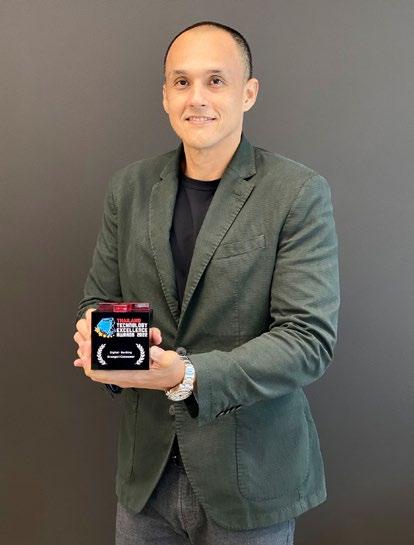



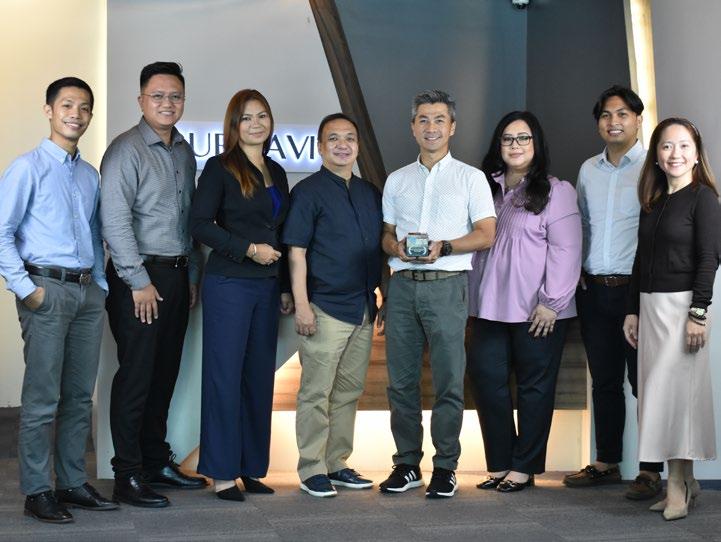





40 THE ASIAN BUSINESS REVIEW
Aurionpro Solutions Ltd
AXONS-AgriTech
AXONS-Trace
AXONS-VRegist
BRAC Bank Limited, Bangladesh
CMC Technology Solution (CMC TS)
Coca Cola Beverages Vietnam
FPT Smart Cloud
GCash
Gur Lavi Corp
Krungsri Consumer - Digital Banking
Krungsri Consumer - Mobile Financial Services
CMC Telecom












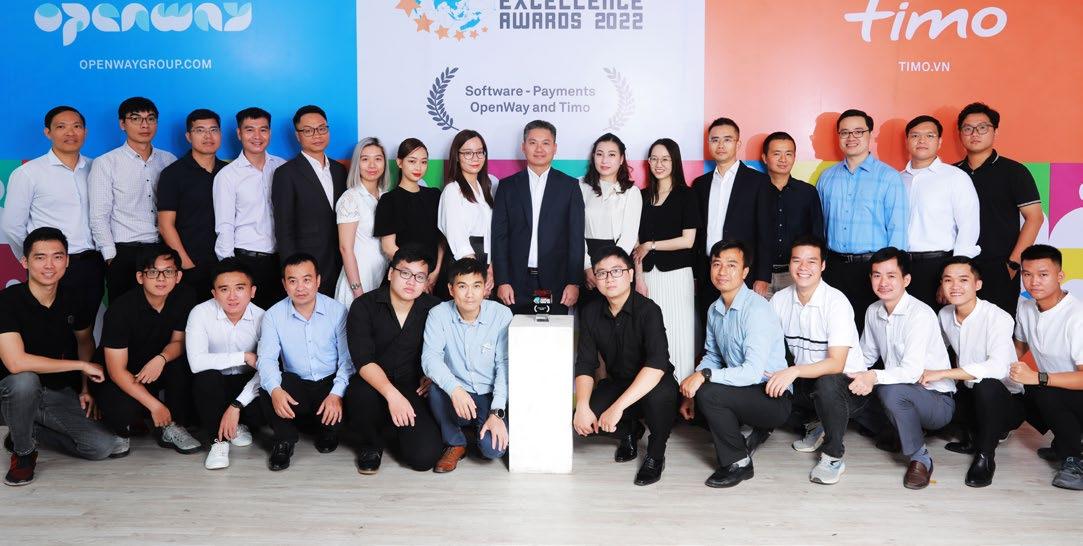


THE ASIAN BUSINESS REVIEW 41
LOGISTICS TECHHUB COMPANY LIMITED Mineski Global
Ngern Tid Lor Public Company Limited
OpenWay
PETNET, Inc.
PT Bank Rakyat Indonesia (Persero) Tbk
PT INFOMEDIA NUSANTARA
PT WIR Asia Tbk
PT. Telkom Indonesia, Tbk
SLTMobitel SCB DBank
PT HSBC Indonesia
NESCAFÉ Thailand
EVENT: ASIAN TECHNOLOGY EXCELLENCE AWARDS









42 THE ASIAN BUSINESS REVIEW
SSI Securities Corporation
SSI Securities Corporation
Standard Chartered Bank (Taiwan) Limited
Tata Communications
Telkom Indonesia
Telkomsel
Tencent Cloud
Tencent Cloud









THE ASIAN BUSINESS REVIEW 43
TVRI
UnionBank Fintech Business Group
UnionBank Data Science and AI
VieON Zindigi – powered by JS Bank
ZTE Philippines Inc.
BRI Closes 2022 with various national and international achievements
As 2022 comes to an end, PT Bank Rakyat Indonesia (BRI) Tbk. (IDX: BBRI) managed to get various achievements aligning with BRIvolution 2.0 Transformations to realise BRI’s vision to become ‘The Most Valuable Banking Group in Southeast Asia’ and ‘Champion of Financial Inclusion’ in 2025.


BRI was named the largest public company in Indonesia in the Forbes 2022 Global 2000 World’s Largest Public Companies in Indonesia. The company recorded a profit of IDR39.31t or grew 106.14% Year on Year (YoY) in the first nine months of 2022.
Furthermore, the volume of financial transactions through BRImo managed to penetrate IDR2,084t as of October 2022 with the number of BRImo users increasing by 73.55% YoY in October 2022.
BRI continues to encourage financial inclusion through BRILink Agents. In September 2022, the number of BRILink Agents reached IDR597,177. The total customer transactions through BRILink Agents during the first nine months of 2022
amounted to 799 million or grew 21.6% YoY with a transaction volume of IDR963t.
One year since its establishment, the integration of SENYUM co-location services has reached 1,003 locations, successfully integrating more than 34 million ultra-micro customers.
Furthermore, BRI completed COVID-19
The number of customers assisted is currently at 2.5 million with 1.4 million customers who are still undergoing restructuring. This is followed by BRI’s ability to maintain asset quality, as seen from the reduction in Loans at Risk (LAR) of 19.3% in Q3 2022.
BRI’s strong commitment to environmental, social, and governance, is realised through sustainable financing reaching IDR 671.1t.
credit restructurings to assist MSME businesses with the most customers (3.9 million) in September 2020, valued at IDR256.1t. As the economic recovery took place, credit restructuring decreased to IDR 116.45t in Q3 2022.
The ‘BRI Menanam’ initiative has distributed 680,000 tree seedlings to KUR customers and BRILian Villages. Targeting 1.75 million tree seedlings in Q4 2023, ‘BRI Menanam’ is estimated to absorb 108,065 tons of CO2 since its launch in August 2022. As of November 2022, BRI has empowered more than 2,182 BRILian Villages throughout Indonesia.
For its impressive performances throughout 2022, BRI has received 167 awards, domestically and internationally. For more information, visit www.bri.co.id
44 THE ASIAN BUSINESS REVIEW
The company was recognised with the with the E-commerce - Banking Award at the Asian Technology Excellence Awards.
INDONESIA TECHNOLOGY EXCELLENCE AWARD FOR E-COMMERCE - BANKING BRI Tower
BRI CONTINUES TO ENCOURAGE FINANCIAL INCLUSION THROUGH BRILINK AGENTS
Integrated Corporate Solution

With seamless features: Cash Management, Trade Finance, Supply Chain Management, Forex, and others. Make your business grow optimally. s.id/QLolabyBRI

qlola.bri.co.id
For more info visit :
SLT-MOBITEL’s LTE 850 MHz Network empowers rural communities with supreme network solutions
ADSL, 4G LTE, cloud services, enterprise solutions, wholesale, international ICT solutions, IPTV services, eChannelling and a host of value-added services.
In its journey of transformation into a digital service provider, SLT-MOBITEL has expanded beyond ICT services to deliver products and services that utilise its core strengths, expertise, and assets. SLTMOBITEL is positioned as a key global player by connecting Sri Lanka to the world through international submarine cable systems. The group also offers submarine cable maintenance, human resources solutions, directory services, digital marketing solutions, and software solutions.

SLT-MOBITEL, the National ICT Agency, has built on and exhausted previous efforts to reaffirm its leadership in innovative broadband deployment solutions. With the coverage enhancement, the mobile arm was able to connect an additional 700,000 subscribers who did not have access to broadband services.
With the L850MHz deployment, SLTMOBITEL was able to further bolster its support during COVID-19, providing rural communities, especially the school children, people who worked from home, and national authorities the ability to immediately respond to COVID-19 emergency situations, thereby narrowing Sri Lanka’s digital divide.
As the national organisation that strives to create value for all stakeholders, SLTMOBITEL’s LTE 850MHz cost-effective broadband services have tremendously uplifted rural communities in the areas of education, work, healthcare, national emergencies, helping them overcome challenges by enhancing the accessibility and affordability of broadband and ICT technologies.
Furthermore, to support network expansion and faster speeds for all, SLTMOBITEL is engaged in the deployment and trialling of its 5G network. To date, SLT-MOBITEL has expanded its 5G precommercial trial to connect across the
country’s major cities, paving the way for customers to experience the transformative power of 5G technology. SLT-MOBITEL has also been recognised for providing unparalleled connectivity and a superior user experience, bagging the prestigious “Fastest Mobile Network” award for three consecutive years by Ookla®, the global leader in fixed broadband and mobile network testing applications, data, and analysis.
In gearing Sri Lanka towards embracing the next generation technologies such as 5G, Metaverse, AI, Big Data, and many more, SLT-MOBITEL continues to invest and expand its network infrastructures, taking the nation towards its next phase of digital advancement.

About SLT-MOBITEL
With a history of over 163 years, SLTMOBITEL is the National Information and Communications Technology (ICT) Solutions Provider and has served the Nation’s need for connectivity, operating on fixed, mobile, and other operational segments, by offering a range of ICT solutions that cater to consumers with a digital lifestyle, including voice, fibre,
Having established a strong local heritage, SLT-MOBITEL Mobile was the first network to launch the Super-3.5G HSPA network in South Asia in 2007 and subsequently trialled HSPA+, MIMO (Multiple Input Multiple Output) in 2009, another first in the region. SLT-MOBITEL Mobile went on to demonstrate 4G-LTE technology also for the first time in South Asia in 2011 and trialled 4.5G LTE-Advanced Pro Technology with CA (Carrier Aggregation) of three bands.
In 2017, SLT-MOBITEL Mobile deployed the first Sub-1G Mobile Broadband Network in Sri Lanka based on a 900MHz spectrum to provide superior coverage to rural areas in the country. Continuing the leadership, in 2018, SLT-MOBITEL Mobile launched the first commercial 4.5G/4G+ Mobile Network in South Asia and successfully trialled 5G by connecting a commercial Mobile smartphone to its 5G network. Further, SLT-MOBITEL Mobile has been recognised by Ookla®, the global leader in fixed broadband and mobile network testing applications, data, and analysis, as the Fastest Mobile Network consecutively for 2019, 2020, and 2021. A growing customer base stands testament to SLT-MOBITEL’s strong focus on the national vision of customer centricity, emulating its credo of “The Connection.” For more information, visit www.sltmobitel.lk
46 THE ASIAN BUSINESS REVIEW
The company was honoured at the Asian Technology Excellence Awards in the Network and Broadband category.
A growing customer base stands testament to SLTMOBITEL’s strong focus on the national vision of customer centricity, emulating its credo of “The Connection”
SRI LANKA TECHNOLOGY EXCELLENCE AWARD FOR NETWORK AND BROADBAND - TELECOMMUNICATIONS
From L-R: Buddhika Maldeniya, Rasantha Hettithanthrige, Shamil Appathurai, Indika Asurappulige, Jeewani Fernando, and Lasitha Rideewita

Transforming the cement manufacturing industry with AI to build a greener and stronger republic
Our society is in the midst of a significant transformation, driven by the acceleration of digitalisation and the need to thrive amidst unexpected disruption. From automated warehouse robots to reducing human error with AI-powered machinery, the positive impacts of technology on the industrial sector is undeniable. The rise of emerging technologies is revolutionising the way companies produce and distribute their products.
Capital goods manufacturing and logistics businesses may be realising the benefits of Data Science and Artificial Intelligence (DSAI), but traditional industries such as construction and cement manufacturing are only just beginning to catch on. Whilst many companies are still grappling with these changes and struggling to integrate new technologies into their operations, embracing this change will enable innovation and push the sector forward.
Aboitiz Data Innovation (ADI) was built upon enabling the use of DSAI across key industry verticals such as financial services, power, and smart cities, to help businesses build and accelerate their own datadriven journeys. Through tried and tested DSAI frameworks, ADI has the expertise and capabilities to drive operational efficiency and cost savings, strengthen risk management, optimise revenue, and promote sustainable innovation. ADI aims to challenge the status quo in traditional sectors and bring about lasting improvements for businesses and communities.
Traditional industries and approaches call for change
As one of the most traditional sectors in the Philippines, the cement industry has not experienced much disruption or innovation. As one of the top countries that are continually impacted by climate change, it is important for the Philippines to take a step back and assess the necessary shifts that can minimise or mitigate trade-offs between economic output and environmental impact.
One of the ways ADI endeavours to help make a difference is through its collaboration with Republic Cement, transforming the way cement is made. With the vision of merging purpose and profit, ADI used a
DSAI-powered model to optimise Republic Cement’s cement manufacturing process, which led to operational efficiency and consistent product quality, whilst promoting environmental sustainability.
Enabling efficient, greener processes through DSAI

To measure the compressive strength of cement is a critical step used as the basis of acceptance of cement in concrete mixes. What would typically take 28 days was simplified and reduced instantaneously with DSAI. ADI deployed a predictive modelling tool that analysed historical data, allowing Republic Cement operators and quality managers to save time and optimise concentrations of raw materials thereby resulting in efficient resource management. Most importantly,
the operationalisation of DSAI in what is considered a traditional industry in the Philippines also effectively reduced Republic Cement’s annual CO2 emissions in their manufacturing plants by approximately 35,000 tCO2e. That is equivalent to greenhouse gas emissions from almost 140 million kilometres driven by an average gasoline-powered passenger vehicle!
ADI’s commitment to approaching innovation through its partnership with Republic Cement won the Philippines Technology Excellence Award for AI –Technology. The project represents the endless possibilities DSAI can bring in enabling new business insights and values. ADI aspires to pave the way for other businesses and sectors to collectively shape a better world through data-driven innovations.

48 THE ASIAN BUSINESS REVIEW
ADI and Republic Cement operationalise Data Science and AI to bring change in the manufacturing industry.
ADI aspires to pave the way for other businesses and sectors to collectively shape a better world through data-driven innovations
PHILIPPINES TECHNOLOGY EXCELLENCE AWARD FOR AI – TECHNOLOGY
ADI Data Science Solutions Team


mgames Solutions: Taking Online Experiences to the Next Level Through Gaming
Through social gaming, mgames Solutions bridges the gap between consumers and brands.
innovations with minimal risk, whilst reaping their full benefits.

Industry giants such as footwear brand Havaianas and smartphone manufacturer OPPO are just some of the notable partners that have worked with mgames to gamify their marketing efforts with much success.
Bringing gaming to all through mgames
Altogether, the success of mgames demonstrates an important fact: gaming is no longer a niche interest. With the rise of smartphones, as well as casual and social gaming, anyone anywhere in the world can enjoy playing games. In turn, games are now an emerging platform for brands to better reach and engage their audiences.
Mineski Global has set its sights on continuing the success of mgames and focusing on growth that puts its partners and community on the same path to reaching their full potential

Through its long-standing experience in esports, Mineski Global created mgames–an online gaming platform–to bring together both gaming and tech in the current digital landscape.
Operating as a digital arcade, mgames is able to offer over 200 fun, hypercasual games without prompting users to download new apps. This is made possible through strategic partnerships with known superapps, becoming exclusively available to their millions-strong user bases.
Mineski Global Chairman and CEO Ronald Robins shared, “Most of the time, when users log into the superapps, they already have an intent of what they need and what to do. What mgames brings to this ecosystem is more of the fun and the social aspect of games, thus resulting in more time on-app, which is kind of important for the actual operating business of superapps.”
With its value proposition and business model, mgames has rapidly grown–both in partner adoption and player base growth— especially in the Southeast Asia region. In nearly two years since being established, mgames has recorded over 3.35 million registered users. The company has also garnered a number of noteworthy partners, including GCash–the top Filipino financial superapp, the global messaging superapp
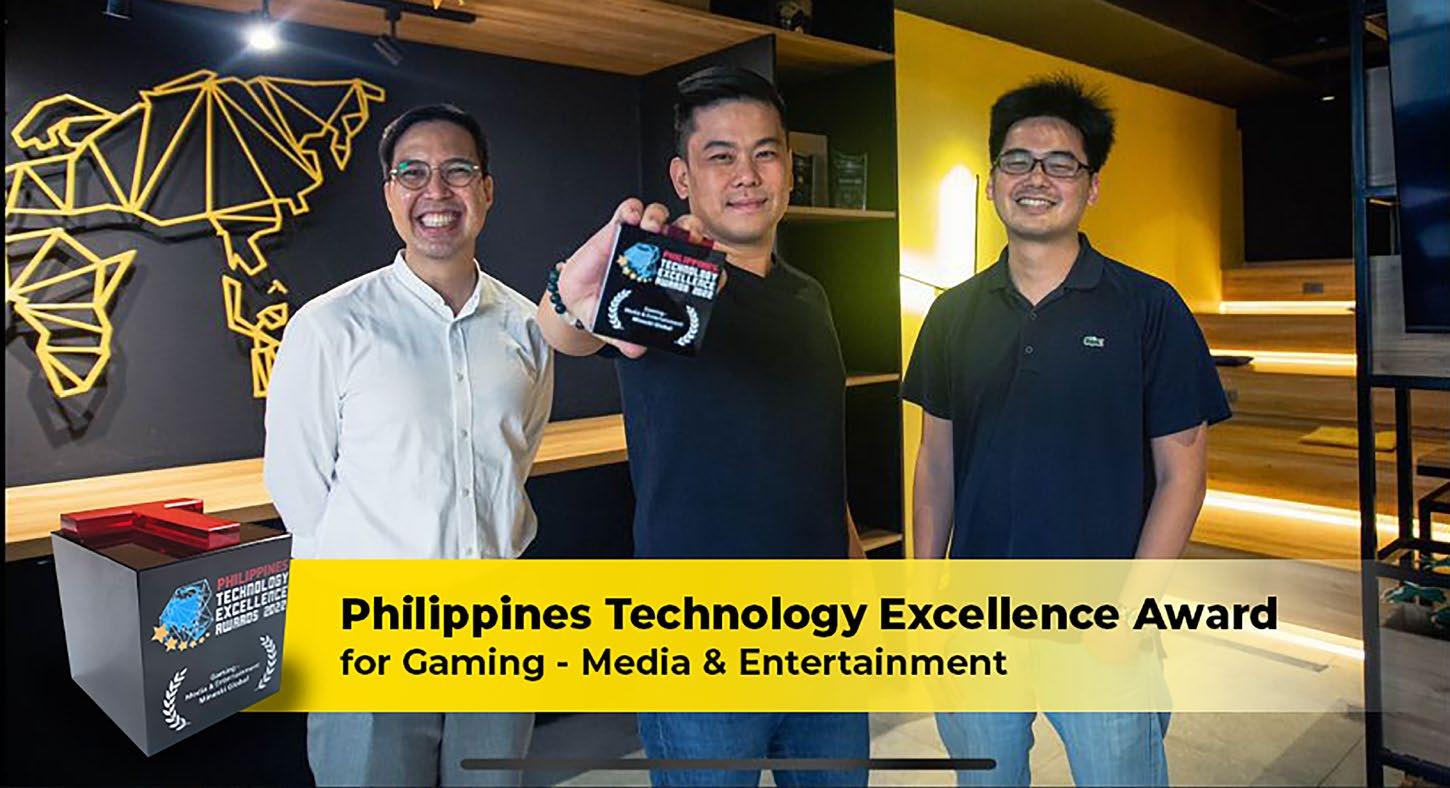
Viber, and Viettel, Vietnam’s largest telecommunications service provider. Robins cited the company’s “win-win-win” framework as a key part of its success–with users, brands, and Mineski itself standing to benefit from this unique business model.
Why mgames?
Given that community is one of the company’s core stakeholders, mgames delivers an elevated online experience in a number of ways. First, casual as well as hypercasual games are made easily accessible through superapps without any additional downloads, creating a larger market reach for the company.
Additionally, key features of the digital platform are heavily centered on enabling social gaming. There is Compete Mode, where avid gamers can vie for top spots on the leaderboard and win exciting rewards. Additionally, players can set up their own private lobbies to game with their friends, family, classmates, coworkers, and the like. Brands–regardless of industry–also stand to benefit from the mgames platform. Gamified marketing services such as game licensing, game rebranding, in-game advertising, leaderboard and tournament sponsorships, and app gamification allow businesses to leverage these technological
With this, the company is looking towards bringing indie game developers and publishers into its thriving framework. It has recently launched mgames Studio, an initiative that allows game creators to publish their games on the mgames platform.
Through mgames Studio, game creators can look forward to showcasing their games to bigger, already-existing communities, thanks to the company’s wide reach on partner superapps. The company is also dedicated to cultivating equal opportunities for its partner creators through careful curation of its growing game library.
As Mineski Global approaches its 20th anniversary, the company has set its sights on continuing the success that mgames has found, and focusing on growth that puts its partners and community on the same path to reaching their full potential.
50 THE ASIAN BUSINESS REVIEW
PHILIPPINES TECHNOLOGY EXCELLENCE AWARD FOR GAMING - MEDIA & ENTERTAINMENT
Ronald Robins, Mineski Global Chairman and CEO























REDEFINING BRAND EXPERIENCES THROUGH GAMES
your marketing efforts to the next level with gamified marketing solutions, tailored to your specific needs Try mgames for yourself: Scan QR code to try our games Learn more at: https://mgames.solutions/
Bring your games to bigger communities, with equal opportunities for both creators and users alike
More to come! Achieve your business goals while providing users with added value through mgames’ digital arcade experience
mgames Solutions Take
mgames Studio
mgames Partnership
Cloud first to cloud smart: A strategic shift

to incorporate the cloud and its elements across each stratum of operations leave limited time to adopt other approaches.
• Getting the right cloud services with the right workload: The varied and complicated nature of cloud service providers (CSP) offerings exacerbates the confusion in matching the right cloud services with the right workload.
• Lack of specialised IT skills: Other than investment, planning and a cultural shift, a cloud transformation also requires a specialised IT skillset that organisations often lack.
Cloud smart and how?
Cloud adoption has been the sole driving force behind digital transformation in recent years. Hence the moniker “cloud first.” Cloud services have evolved with time to underpin major transformational, cultural, and organisational shifts.
However, not all companies and organisations have successfully realised their cloud goals. Despite this, cloud adoption will continue to become a mainstay of business processes, and this is where the cloud smart strategy can help.
Why Cloud Smart?
For nearly a decade, cloud-first has been the prevalent approach to cloud adoption initiatives. It aims at maximising the cloud footprint by prioritising legacy system modernisation resulting in some workload migrations being counterproductive. Some of the main shortcomings of a cloud-first approach plaguing enterprises are:
• Gaps between cloud expectation and execution abilities: Organisations can often develop unrealistic expectations from the cloud that get compounded due to the lack of technical, financial, or strategic skills.
• Incongruency due to siloed business processes: Legacy organisational properties like operational silos, rigid IT governance, as well as outdated foundational practices are often incompatible with the cloud.
• Speed over planning: A cloud-first approach is speed centric. The mad rush
As per Gartner, 60% of organisations that had adopted a cloud-first approach are predicted to switch to a cloud-smart approach by 2023. To derive maximum value from cloud investments, you need a well-versed, thorough, and holistic strategy. Here are a few crucial considerations:
• Identify and set realistic goals
The priority towards driving a cloud smart approach is to set realistic goals and expectations for cloud initiatives.
• The right fitment for the migration-mix
Identify the right cloud environments to determine which applications to keep on-premises and which to migrate to the cloud (private/public).
• A performance measurement cycle
Identify all the benchmarks and then focus on improving them as you progress along with a cloud smart strategy.
• The right investment in services and orchestration tools
Invest in tools and services that help in reducing the complexity of your cloud journey.
• Mitigation of the risks and compliance violations
Ungoverned cloud adoption and poor foundational practices can put organisations at risk of security breaches, data loss, compliance issues and budget overruns that need to be
contained and mitigated.
• Workplace culture realignment
Use your current resources to their maximum value including reskilling and retraining staff. Also, enhance security postures and use best practices to inherit cultural reforms.
• A cloud exit strategy
Create a clear cloud exit strategy during the initial cloud design and planning phases considering aspects such as stakeholder management, application, legal and data governance, etc.
Collaboration is the key
Businesses can choose to partner with experienced cloud migration experts and managed service providers like Tata Communications.

We enable organisations to unlock significant business value from their cloud investments by weaving their disparate IT infrastructure together, orchestrating the different clouds to provide a unified cloud environment that is optimised, continuously monitored and managed.
With us, companies will not just have a partner with the required skill set to manage their cloud journey but will also find the bestfit solution with the capacity and capability to deliver a holistic cloud experience.
Our roadmap toward cloud optimisation includes:
• Formulating a well-defined strategy that identifies obstacles, ensures minimal disruption, as well as sets realistic goals and expectations.
• Improving both performance and cost-saving initiatives through a wellcrafted migration strategy.
• Championing workload migrations in sync with organisational preferences and its technological, security, as well as regulatory environments.
• Enabling organisations to take advantage of cloud economics by protecting current investments, optimising infrastructure resources, and forecasting the budget efficiently by providing visibility into the cost. After all, the cloud cannot deliver on its promise if you don’t know what to expect from it. In fact, effective cloud adoption hastens the development of nextgeneration, digitally enabled businesses.
52 THE ASIAN BUSINESS REVIEW
“Cloud Smart” approach by Tata Communications helps organisations overcome cloud adoption challenges.
“With cloud evolving both in its purpose and elements, enterprises need to evolve their cloud-first approach to a cloud smart strategy which aims at matching their organisation’s business goals and circumstances to their ability to execute with the cloud.” -Rajesh Awasthi
INDIA TECHNOLOGY EXCELLENCE AWARD FOR CLOUD
Mr Rajesh Awasthi, Head of Cloud and MHS, Tata Communications








info@gurlavi.com.ph telavi.com.ph (632) 8967 0580 CONTACT US: START YOUR FREE TRIAL 14-DAY FREE TRIAL 14-DAY and get your on your monthly subscription! 50% OFF 50% OFF Promo Period: March 1 - April 30, 2023
Your one-stop destination from farm to fork for a smarter Agritech Solution
AXONS aims at inventing technologies and providing a digital infrastructure service in order to encourage digital systems of the agricultural and a fully-integrated food industry businesses, delivering all dishes to worldwide consumers with sanitary, safety and standard for a better health and well-being.

AXONS emphasizes its digital potential by having won 3 awards from the Asian regional competition in Agritech via the systems, namely the Agricultural Knowledge Platform; Personnel Screening System (to prevent contamination before factory entry); and Traceability System.



FUTURE DRIVING FOR LIVES Blockchain - Retail AXONS Enterprise SoftwareConglomerates AXONS Mobile - Agriculture AXONS
FPT.AI is a comprehensive AI-powered platform to amplify productivity and transform customer experience

1.Conversational
The solution includes 02 products - FPT AI Chat, FPT AI Engage, allowing businesses to optimize omni-channel interaction with customers, automating various tasks: customer services, telesales, payment reminder, etc.

Make 12,000,000+ calls/month
Handle 2,100,000+ messages/month Save 60% operating expenses Increase 40% productivity Customer satisfaction: 90%+
FPT AI Enhance allows automation for call quality assurance, helping to explore customer insights and enhance agent performance

3.Intelligent Document Processing
FPT AI Read recognizes and extracts data, processes documents, and thus, minimizes manual works for humans.
Processing time less than 1 sec

50+ document templates
4.Digital Cus tomer Onboarding (eKYC)
FPT AI eKYC enables customer identity verification on digital platforms, offering positive and convenient experience to end-customers.
Accuracy rate of up to 99% fpt.ai support@fpt.ai
 FPT AI Chat (chatbot) FPT AI Engage (voicebot)
AI
2.AI Contact Center Enhancement
FPT AI Chat (chatbot) FPT AI Engage (voicebot)
AI
2.AI Contact Center Enhancement
TAX INVOICE.PDF RECEIPT.JPG FINANCIAL STATEMENT.PDF












Download Now 100.000+ hours content library 200 TV channels 5 world-class football leagues Stream on multiple devices


As a digital ecosystem, Leap supports the growth of Telkom Indonesia's digital products and services to accelerate Indonesia's digital sovereignty Scan












Here leap.telkomdigital Leap.TelkomDigital LEAP_Telkom












Get to know the exceptional winners of the Middle East Awards 2022
Innovation is crucial for companies, particularly since advanced technology plays a vital role in the production of businesses today. In the wake of the pandemic, many organisations suffered significant economic losses, but they have since rebounded and are delivering valuable and innovative solutions to their stakeholders.
To honour the exceptional efforts of these enterprises, the Asian Business Review brought back the Middle East International Business Awards and Middle East Technology Excellence Awards in recognition of companies that pushed the boundaries and exceeded expectations in the Middle East.
These awards programmes awarded companies that significantly contributed to technological innovation in their respective industries and have come up with initiatives that helped in their company’s growth. The presentation was held on October 6, 2022 at the Shangri-La Dubai.
Entries for the Middle East International Business Awards were evaluated by an equally esteemed panel which includes Dr. Bassam
MIDDLE EAST INTERNATIONAL BUSINESS AWARDS 2022WINNERS
Avaya International Communications
Axis Bank Ltd., DIFC Banking
Castrol Lubricants
Oil & Gas
CrimsonLogic Pte Ltd Technology
Milwaukee Tool MEA
Machining and Tooling
Stanley Black and Decker
Residential Building Construction
Symrise Middle East Limited
Food & Beverage
MIDDLE EASTTECHNOLOGY EXCELLENCE AWARDS 2022WINNERS
Abu Dhabi Department of Culture and Tourism (DCT)
Cloud - Government Organisation
Al Yah Satellite Communications Company PJSC (Yahsat)
Marine Technology - Satellite
Aster Hospitals UAE
Automation - Healthcare
Dahman, Co-Founder and Managing Partner UAE | Regional Leader - MENA at RSM; Surya Narayanan Krishna Moorthy, Partner & Chief Executive Officer (Sharjah & Northern Emirates) at Baker Tilly; Shivendra Jha,Partner, Head of Advisory Services at BDO UAE. Meanwhile, nominations for the Middle East Technology Excellence Awards were judged by an esteemed panel of judges composed of Fadi Komati, Partner Middle East, Technology Consulting Leader at PwC Middle East; Amit Tenglikar, Associate Director - Technology Advisory Services at BDO UAE; Dr. Swamy Pentyala, Partner - CEO - Infotech Solutions & Technology Practice Leader at Baker Tilly Middle East; Binit Shah, Partner, Taxation & Technology at Crowe UAE; Fady Kassatly, Partner, Head of Digital & Innovation Solution Group at KPMG Lower Gulf.
Congratulations to the winners!
BNET (Bahrain Network)

Infrastructure Technology - Telecommunications channels by stc Enterprise Software - Telecommunications
Cloud4C Services
Cloud - IT Services
COFE App Startup - Food & Beverage
Connect Mentors
Online Services - Education
e& enterprise
ICT - Technology
Edgematics
Web Services - Technology
Floward
E-Commerce - Retail
HCLTech Automation - IT Services
iNNOVATEQ
Analytics - Oil & Gas
Khimji Ramdas LLC
Digital - Luxury Retail
Ministry of Municipal and Rural Affairs and Housing - Taif Municipality
Digital - IT Services
62 THE ASIAN BUSINESS REVIEW EVENT: MIDDLE EAST
AWARDS
Monstarlab Middle East DMCC
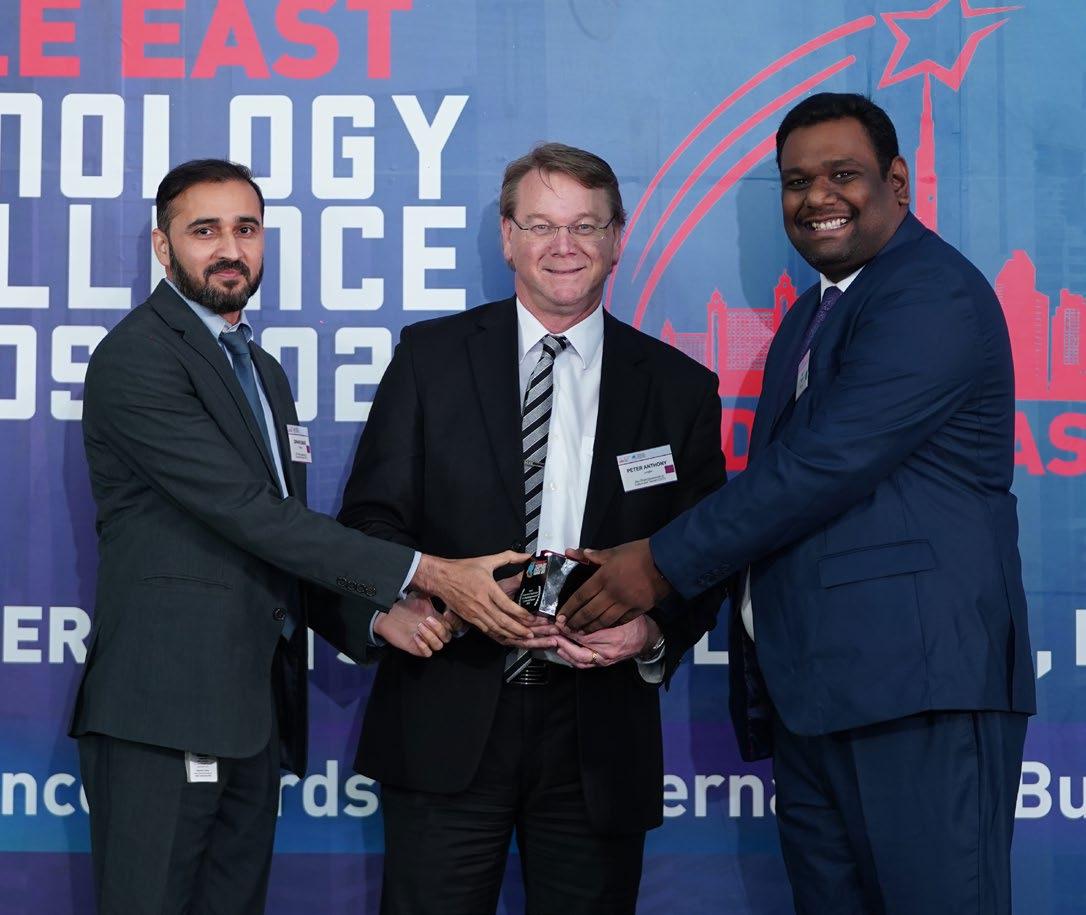

Digital - Financial Services

National Gas & Industrialization Co. (GASCO)
Digital - Oil & Gas
Nets International LLC
Automation - Telecommunications
Nirvana Over the World Travel Technology - Travel Services
Ooredoo Oman
Cloud - Telecommunications
OPTION 1 LIVE / LED PULSE
Design Technology - Technology

Petrofac Limited
Digital - Energy
Riversong Battery Technology - Consumer Products (Durables)
Sahab Smart Solutions
E-Wallet - Government Organisation
Saline Water Conversion Corporation (SWCC)
Mobile - Utilities
SECUREYES LIMITED
Cybersecurity - IT Services
Smart Citizens DMCC
IoT - Technology
stc
Data Centre - Telecommunications
stc Bahrain
CSR Technology - Telecommunications
The General Administration of Customs - Abu Dhabi
Augmented Reality and Virtual Reality - Government Organisation
The Saudi Standards, Metrology, and Quality Organization Information Management - Technology

UNITED COOPERATIVE ASSURANCE (UCA)
Automation - General Insurance
Yalla Group Limited
Internet - Media & Entertainment
Zendy Startup - Education
THE ASIAN BUSINESS REVIEW 63
e& enterprise
iNNOVATEQ
Abu Dhabi Department of Culture and Tourism (DCT)
EVENT: MIDDLE EAST AWARDS










64 THE ASIAN BUSINESS
REVIEW
Al Yah Satellite Communications Company PJSC (Yahsat)
Aster Hospitals UAE
BNET (Bahrain Network)
channels by stc Cloud4C Services
COFE App Floward
HCLTech Nirvana Over the World







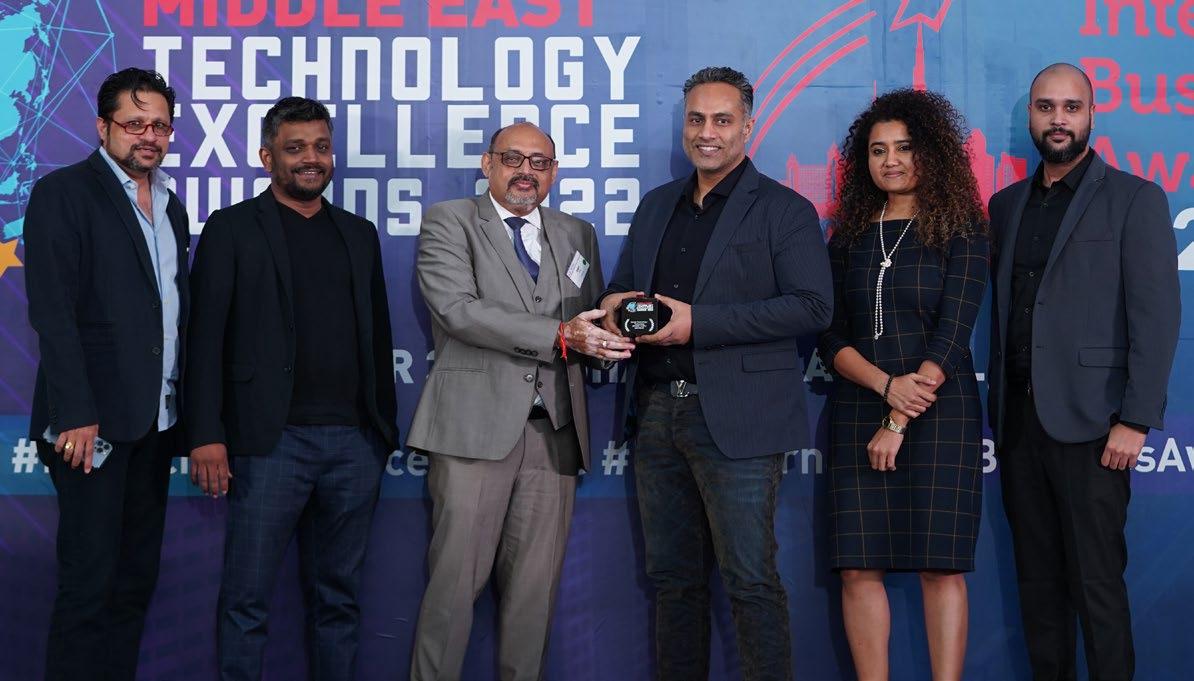

THE ASIAN BUSINESS REVIEW 65
Ooredoo Oman
OPTION 1 LIVE / LED PULSE
Petrofac Limited
Saline Water Conversion Corporation (SWCC)
stc Bahrain
The General Administration of Customs - Abu Dhabi
Zendy
EVENT: MIDDLE EAST AWARDS






66 THE ASIAN BUSINESS
REVIEW
Yalla Group Limited
CrimsonLogic Pte Ltd
The Saudi Standards, Metrology, and Quality Organization
UNITED COOPERATIVE ASSURANCE (UCA)
Axis Bank Ltd., DIFC







THE ASIAN BUSINESS REVIEW 67
Axis Bank Ltd
Milwaukee Tool MEA Symrise Middle East Limited
INTELLIGENT HOSPITALS: Looking into Aster Hospitals utilization of AI technology
The healthcare group adapted to smart technology that empowered them to redefine the care-delivery model and ensure seamless care to the patient.


COVID-19 redefined the concept of healthcare. It propelled the pace of digital transformation on a massive scale. Hospitals had to adapt to technology that would enable them to serve patients effectively and seamlessly amidst the challenges posed by the pandemic.

Aster Hospital has been at the forefront in driving digital transformation across its facilities in the UAE. It embraced technology and integrated it into its daily operations ensuring seamless delivery of care.
Aster Hospitals were the first in the UAE to embrace AI-based closed-loop transactions. One of the major innovation projects was the Workstation on Wheels (WoW) project. It replaced stationary computers with a mobile medical cart with a laptop surmounted on the top allowing easy access to the Hospital Information System (HIS) and real-time feeding of data of the patient.
The hospital group also introduced Personal Digital Assistant tools and hand-held barcode scanning devices of Zebra technologies that empowered doctors to access electronic medical records and reduced the scope of human error in documentation and validation.

Aster’s dedication and its pioneering effort toward digital advancements played a pivotal role in being recognised by the Middle East Technology Excellence Awards. Aster Hospitals has bagged the award in the Automation - Healthcare category. Techsys Technology is the technology partner of Aster Hospitals.
The prestigious award program honors outstanding companies in the region for their excellence in pursuit of technological innovation in their respective industries.
The pandemic was a great learning lesson for all engaging in the healthcare industry. It drew the flaws of the existing care-delivery model. But at Aster, we rose to the challenges and responded to it effectively and spontaneously by adapting to technology that would help us in serving our patients. It helped us in delivering care to our patients without disruption. Teleconsultation, Homecare, and other services were planned, designed, and launched. We integrated smart technology into our daily operations as well. Drive for innovation and keeping abreast of the technology are our key priorities at Aster. We are committed to technological advancements that would improve our care delivery system.
Dr. Sherbaz Bichu, CEO of Aster Hospitals and Clinics, UAE
ENJOY LIGHTNING SPEED


UCA’S ELECTRONIC INSURANCE SERVICES

WHERE CONVENIENCE MEETS QUALITY
Quality
Client’s comfort

Fast reaction
United Cooperative Assurance (UCA) is a publicly-listed company operating in Saudi Market since 2008.








THE ASIAN BUSINESS REVIEW 71 Cloud Specialists for Mission Critical Environments Any Cloud. Any Platform. Total Control Cloud Solutions Provider Expertise www.cloud4c.com measales@cloud4c.com












72 THE ASIAN BUSINESS REVIEW


Castrol Lubricants celebrates UAE mechanics in world’s biggest frame
Castrol’s “Portraits of Change” has shifted the perception of mechanics to unsung heroes.
Castrol Lubricants in the Middle East have taken UAE mechanics from being unsung heroes, whose positive contributions often went unseen, to be visible on the biggest frame in the world.
Celebrating the vital work of UAE mechanics to keep drivers and passengers safe on our roads, the world’s largest portrait exhibition at The Dubai Frame, “Portraits of Change” was conceptualised and brought to life through innovative digital marketing.
Often underappreciated as key facilitators of a thriving infrastructure, Castrol invited mechanics to share their stories, allowing people to “see” them in an all-new light. Castrol encouraged the mechanics to showcase their personality and passion by giving an insight into their hopes and dreams in a series of powerfully stunning portraits.
Initially revealed on social media, the stunning photographs were proudly displayed in none other than the world’s biggest frame
– The Dubai Frame – a fitting tribute that acknowledges how vital mechanics are to our society.
“Like any other job, we want our efforts to be


with Influencers, media, and more importantly consumers to continue the conversation on social media, posting the mechanics portraits, and treating consumers to behind-the-scenes

74 THE ASIAN BUSINESS REVIEW
OIL & GAS
Navigate cross-border customs processes with our world class end-to-end trade compliance solutions. Minimise tax costs and navigate trade processes in 180+ countries Fulfil regulatory requirements through 60+ Customs nodes Ensure readiness for post-clearance audit and review Pre-clearance Clearance Post-clearance MOVE CARGO SEAMLESSLY. ACROSS BORDERS, AROUND THE WORLD www.crimsonlogic.com | marketing@crimsonlogic.com Copyright © CrimsonLogic Pte Ltd. All rights reserved. Are you a logistics service provider or budding enterprise? Contact us for a complimentary consultation.






Best of Nature, best of Science. Taste, Nutrition & Health
Innovative, experience-centred initiatives honoured at the Asian Experience Awards
As customer demand for better products and services continues to increase, businesses are challenged to keep raising the bar. In recognition of the innovative and enterprising initiatives that companies introduced the past year to deliver exceptionally meaningful brand experiences to their stakeholders, the Asian Business Review is honoured to announce the winners of the Asian Experience Awards 2022
Last year’s awards, the second since its launch in 2021, selected the winners from nominated companies belonging to all industries across Asia for their unique, standout, or innovative experience projects that served their clients, potential customers, or employees. The awards presentations and video interviews were held via a
TheAsian Business Review congratulates the following winners:
AECOM Global Business Services Philippines ROHQ
Philippines Employee Experience of the Year - Shared Services
Allianz PNB Life Insurance, Inc.
Philippines Employee Experience of the Year - Financial Services
AVIS MALAYSIA
Malaysia Customer Experience of the Year - Car Rentals
BDO Unibank, Inc.
Philippines Product Experience of the Year - Banking
Castrol Lubricants Middle East
United Arab Emirates Customer Experience of the Year - Oil & Gas
Brown-Forman China
China Brand Experience of the Year - Food & Beverage
Chubb Life Vietnam
Vietnam Brand Experience of the Year - Life Insurance
CIMB BANK (VIETNAM) LIMITED
Vietnam Partner Experience of the Year - Banking
CIMB Bank Berhad, Singapore Branch
Singapore Digital Experience of the Year - Banking
CUCKOO International (MAL) Sdn Bhd
Malaysia Service Experience of the Year - Health Products & Services
Malaysia Product Experience of the Year - Beauty & Cosmetics
DXC Technology

Brunei Employee Experience of the Year - IT Services
Indonesia Employee Experience of the Year - IT Services
virtual event and were attended by executives who represented their respective winning companies.
The panel of judges consisted of highly respected industry experts such as Guillaume Sachet Partner, Head, Customer Practice, KPMG; Sam Lo, Asean EY Private Assurance Leader and Partner, Ernst & Young LLP; Roger Loo Executive Director, Head of Management Consulting Services, BDO Singapore; Loretta Fong, Entrepreneurial Group Leader, Assurance, PwC Hong Kong; and Allen Wong, Deloitte HK and Southern China Consulting Leader and Digital Leader Deloitte.
Congratulations to all the winners!
FrieslandCampina Vietnam
Vietnam Customer Experience of the Year - Food & Beverage
Globe Telecom
Philippines Employee Experience of the Year - Telecommunications
HSBC Philippines
Philippines Brand Experience of the Year - Banking
Philippines Employee Experience of the Year - Banking
Hwahsia Glass
Taiwan Digital Experience of the Year - Manufacturing
IBM Philippines
Philippines Employee Experience of the Year - Technology
Income Insurance Limited
Singapore Digital Experience of the Year - Financial Services
INDOSAT OOREDOO HUTCHISON (IM3 Brand)
Indonesia User Experience of the Year - Telecommunications
Indonesia Customer Experience of the Year - Telecommunications
J&T Express Singapore
Singapore Employee Experience of the Year - Logistics
Singapore Partner Experience of the Year - Logistics
KASIKORN Business-Technology Group
Thailand Employee Experience of the Year - Financial Technology
Krungthai Bank PLC
Thailand Employee Experience of the Year - Banking
Krungsri Auto (GO application by Krungsri Auto)
Thailand Digital Experience of the Year - Banking
OCBC Bank
Singapore Employee Experience of the Year - Banking
Singapore Product Experience of the Year - Banking
Singapore User Experience of the Year - Banking
76 THE ASIAN BUSINESS REVIEW EVENT: ASIAN EXPERIENCE
AWARDS
Palo Alto Networks

Singapore Customer Experience of the Year - Cybersecurity
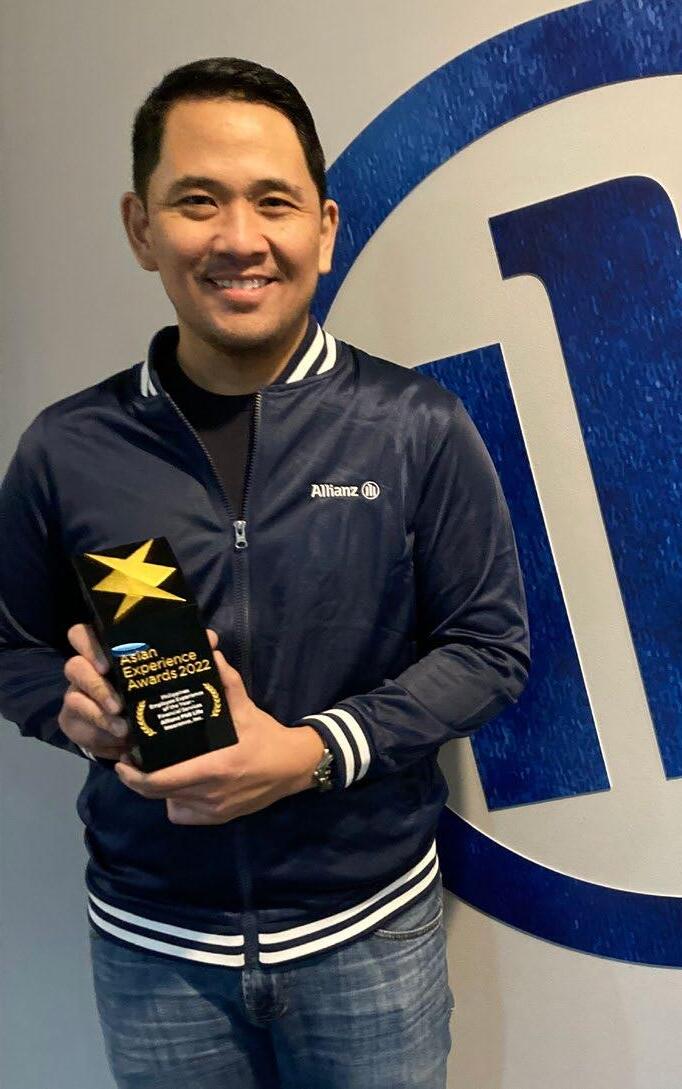
Petroliam Nasional Berhad
Malaysia Digital Experience of the Year - Oil & Gas
Prudential Life Assurance Thailand

Thailand Service Experience of the Year - Life Insurance
PT Sodexo Indonesia
Indonesia Service Experience of the Year - Business Services
PT. AstraZeneca Indonesia
Indonesia Customer Experience of the Year - Pharmaceuticals
PTT Exploration and Production Public Company Limited
Thailand Brand Experience of the Year - Oil & Gas
Rakuten Trade Sdn Bhd
Malaysia Digital Experience of the Year - Brokerage
Rizal Commercial Banking Corporation
Philippines Digital Experience of the Year - Banking
SARSABZ FERTILIZERS
Pakistan Digital Experience of the Year - Agriculture
Schneider Electric Vietnam
Vietnam Digital Experience of the Year - Energy
Siam Commercial Bank Public Company Limited
Thailand Customer Experience of the Year - Banking
Standard Chartered Bangladesh
Bangladesh Digital Experience of the Year - Banking
TAG Innovation
Pakistan Digital Experience of the Year - Financial Services
Talk2 Solutions Co., Ltd
Cambodia Service Experience of the Year - Business Services
Thanh Thanh Cong Bien Hoa Joint Stock Company (TTC Sugar)
Vietnam Customer Experience of the Year - Agriculture
Traphaco Joint Stock Company
Vietnam Customer Experience of the Year - Pharmaceuticals
United Overseas Bank (Malaysia) Bhd
Malaysia Customer Experience of the Year - Banking
Vista Land & Lifescapes, Inc.
Philippines Digital Experience of the Year - Real Estate
Watsons International
Hong Kong Customer Experience of the Year - Retail
Western Digital Tech and Regional Center (M) Sdn Bhd
Malaysia User Experience of the Year - Technology
Yanolja Cloud Pte. Ltd.
Singapore Digital Experience of the Year - Travel Services
Zurich Malaysia
Malaysia Brand Experience of the Year - Financial Services
Malaysia Customer Experience of the Year - Financial Services (Insurance)
THE ASIAN BUSINESS REVIEW 77
Allianz PNB Life Philippines
AVIS Malaysia
EVENT: ASIAN EXPERIENCE AWARDS





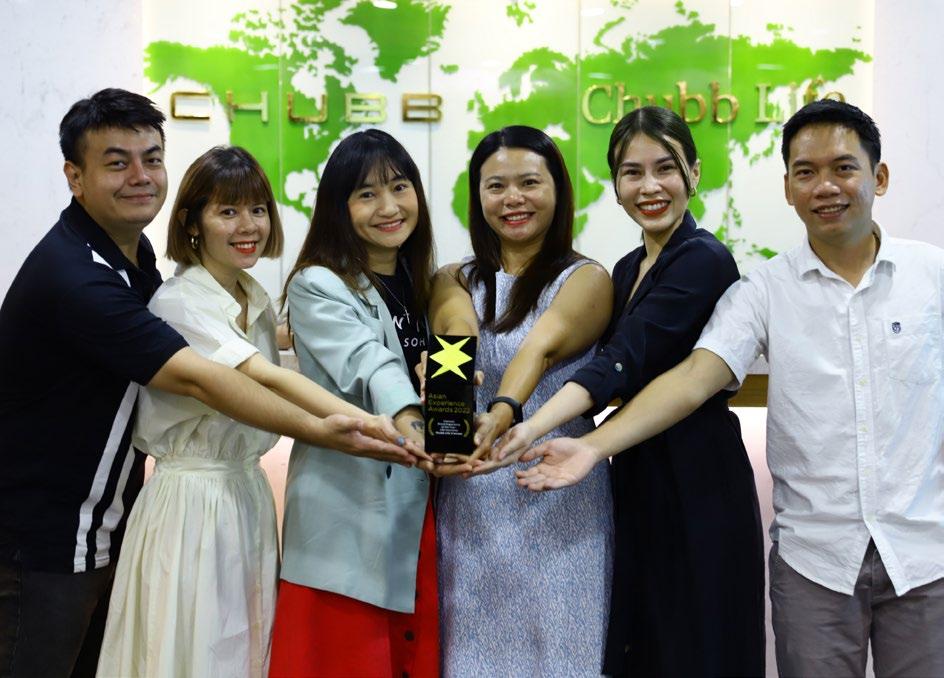


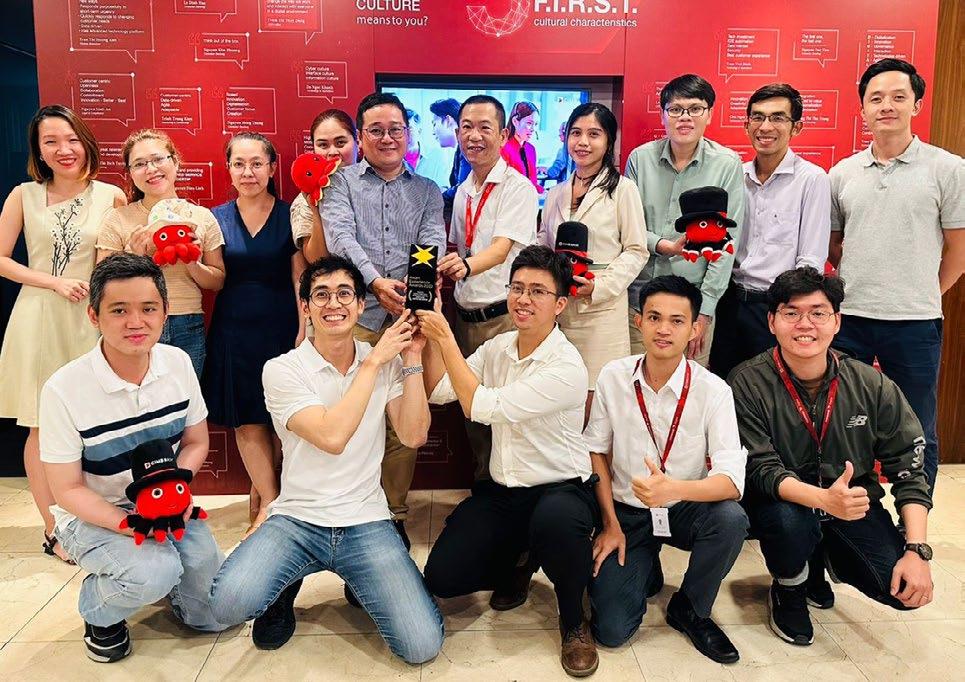


78 THE ASIAN BUSINESS REVIEW
BDO Unibank, Inc.
Brown-Forman China
CIMB Bank Berhad, Singapore Branch
Chubb Life Vietnam
CIMB Vietnam
FrieslandCampina Vietnam
HSBC Philippines
IBM Philippines
DXC Technology








THE ASIAN BUSINESS REVIEW 79
Income Insurance Limited
J&T Express Singapore
INDOSAT OOREDOO HUTCHISON (IM3 Brand)
KASIKORN BusinessTechnology Group
Krungthai Bank PLC
OCBC Bank
Traphaco Joint Stock Company
EVENT: ASIAN EXPERIENCE AWARDS





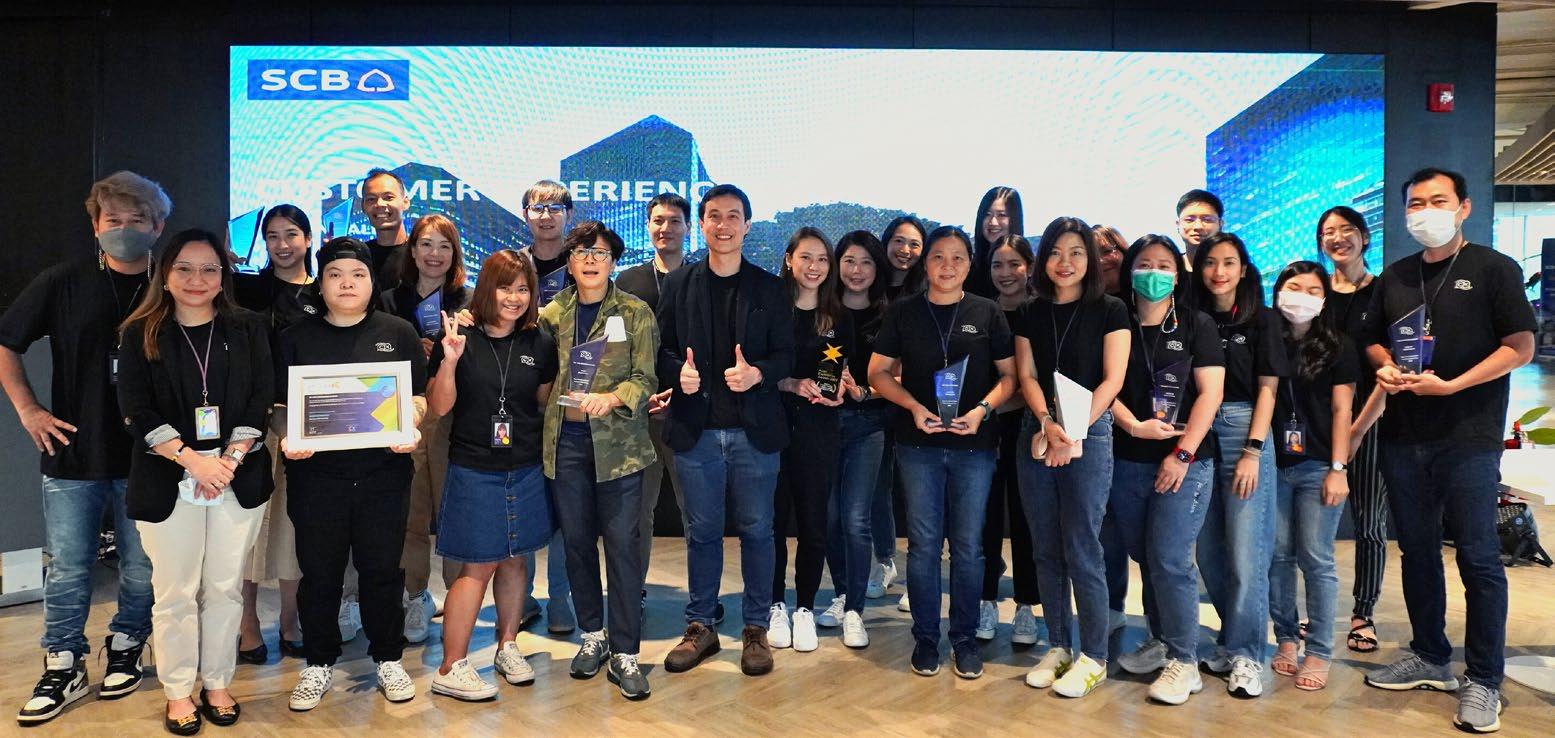



80 THE ASIAN BUSINESS REVIEW
Petroliam Nasional Berhad
PT. AstraZeneca Indonesia
PTT Exploration and Production Public Company Limited (PTTEP)
Rakuten Trade
SARSABZ FERTILIZERS Talk2 Solutions Co., Ltd
Siam Commercial Bank Public Company Limited
Krungsri Auto (GO application by Krungsri Auto)




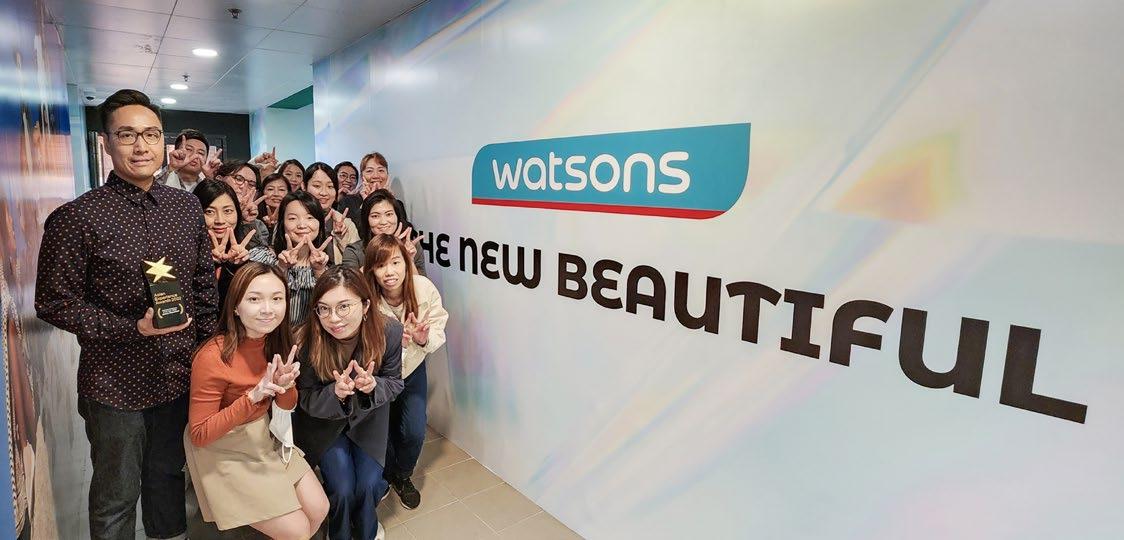


THE ASIAN BUSINESS REVIEW 81
United Overseas Bank (Malaysia) Bhd
Yanolja Cloud
Vista Land & Lifescapes, Inc.
Zurich Malaysia
Watsons International
Western Digital Tech and Regional Center (M) Sdn Bhd
SINGAPORE EMPLOYEE EXPERIENCE OF THE YEAR - LOGISTICS SINGAPORE PARTNER EXPERIENCE OF THE YEAR - LOGISTICS
J&T Express: Delivering an unmatched experience for e-commerce brands and employees
Their commitment to diversity and inclusivity leads to recognition at the Asian Experience Awards.
as a trusted partner and advisor. With a global network spanning 13 countries, the company hopes to continue supporting its partners as they scale up, offering international shipping services that enable more local businesses to fulfil their growth ambitions and expand into new markets.
Diversity and equality in hiring
J&T Express’ employees are the heart and soul of the business. Right from the start, the importance of building an inclusive and diverse workplace has always been believed to be the key to building a strong talent pipeline, and retaining and attracting a diverse workforce.
With the fastest growth rates in the world at 20.6% in 2022, Southeast Asia has seen its e-commerce sector expand rapidly, which in turn has pushed logistics solutions to the forefront of business operations. Access to cost-effective and efficient logistics services is therefore a critical way for businesses to expand and reach new customers.
This is exactly what J&T Express set out to achieve when it was first established in 2015. As a one-stop logistics solutions specialist, the company prides itself on being deeply passionate about delivering convenient and quality services that support the long-term sustainability of e-commerce businesses of all sizes.
Yet, as the e-commerce sector grows and evolves, new challenges have come to the fore. Year-end shopping campaigns have become the norm, demanding online businesses and logistics solutions providers to quickly adapt to sudden peaks in demand. At the same time, this e-commerce boom has also led to a talent crunch. This means that in order to adapt to the new landscape today, logistics companies need to tap into technologies available to improve operations as well as look beyond the usual hiring pools for talent.
J&T Express Singapore took firm steps to streamline its processes and build a diverse workplace, with its efforts being recognised at the recent Asian Experience Awards where the company clinched the Singapore Employee Experience of the Year – Logistics and the Singapore Partner Experience of the Year – Logistics awards.
J&T Express’ focus on e-commerce has given it a unique opportunity to actively shape the development of career paths and its collaborations with partners. As a relatively young logistics company operating at a global level, J&T Express is honoured to be acknowledged for its commitment to building a strong culture that benefits both its employees and its partners.
A partner of choice
Running an e-commerce business presents many logistical challenges, from operational processes to last-mile delivery. Such challenges are often exacerbated during the year-end shopping season, where e-commerce businesses will see a periodic surge in demand. To ensure deliveries are efficiently fulfilled during these peak periods, J&T Express works closely with its customers to discuss forecasted delivery volumes, logistics arrangements, and operational processes. Through this collaborative process, both companies will be able to prepare and ramp up operations accordingly to support spikes in demand. Working together with partners has allowed J&T Express Singapore to grow and become more adaptable and proactive in streamlining processes to meet the unique needs of each customer.
As a logistics service provider, J&T Express Singapore is committed to serving customers

For example, J&T Express Singapore actively participates in community outreach efforts to expand beyond the usual candidate pools, like collaborating with Yellow Ribbon Singapore (YRSG) –an initiative to provide full-time, stable employment opportunities with the aim of helping employees rebuild their lives.
Embracing flexible working arrangements is another talent retention strategy that J&T Express Singapore has adopted which has enabled the company to improve engagement, job satisfaction, and loyalty.
To build a strong workplace culture, the company often plans team bonding activities, in addition to introducing interest groups for team members with similar sports activities, hobbies, or interests. With more opportunities to relax and unwind together, such initiatives have also facilitated the development of informal support networks that are key to boosting engagement at work.
Paving a new road ahead for e-commerce
As the e-commerce sector continues to mature and evolve, J&T Express is focused on delivering continuous innovation that will push boundaries and create meaningful brand experiences for partners and employees alike. The company has consistently proven its mettle and weathered challenges time and time again, coming out stronger. Looking ahead, J&T Express will continue to set its sights on driving innovation and future-forward initiatives that will transform the logistics industry for years to come.
82 THE ASIAN BUSINESS REVIEW
We’re excited to continue driving future-forward initiatives that will transform the logistics sector for years to come
J&T Express provides logistic services to support e-commerce businesses
ONE - STOP ECOMMERCE LOGISTICS

About Us
J&T Express is a global logistics service provider with leading express delivery businesses in Southeast Asia and China, the largest and fastest-growing markets in the world. Adhering to its “customer-oriented and efficiency-based” mission, J&T Express is committed to providing customers with integrated logistics solutions through intelligent infrastructure and digital logistics network, as part of its global strategy to connect the world with greater efficiency and bring logistical benefits to all.

EXPRESS YOUR ONLINE BUSINESS
International Delivery Fulfilment & Warehousing Last Mile Delivery www.jtexpress.sg SCAN FOR MORE
Services
Our


CMY
Decarbonise












your pipeline operational emissions with Pipeline Of The Future (POTF) Solutions
Talk2 Solutions has been recognized as a leading Outsourcing Company in Cambodia by providing professional Contact Centre Services to various type of business both locally and internationally including Korea, Japan, Hong Kong, United States, and so on…












Our Value Propositions: Setting up and managing an in-house call center operation is a challenging proposition to many companies. This is because setting up a contact center required heavy upfront investments on equipment, advanced technologies, and human resource development. Whereas, management of in-house contact center is sophisticated and required trained resource and skilled forces. In addition, the operating costs, especially personnel-related costs, are high. That’s why outsource contact center becomes global trend to reduce operating costs and enhance customer service quality, leading to customer satisfaction and company’s pro tability.
Our Philosophy



86 THE ASIAN BUSINESS REVIEW TALK2 Contact Center Outsourcing www.talk2solutions.com +855 15 325 222 We Think Like a Customer, and Act Like an Owner Contact Center Solutions We Prosper Together The Leading Contact Center Outsourcing Company in Cambodia




THE ASIAN BUSINESS REVIEW 87






88 THE ASIAN BUSINESS REVIEW
The happiness of one ethnic minority family in the eld of artichoke medicinal herbs certi ed GACP-WHO standards of Traphaco JSC (Artichoke - medicinal herbs for the production of liver tonic Boganic)

Number 1 pharmaceutical brand in Vietnam (according to Nielsen)
The strongest distribution system in Vietnam's pharmaceutical industry


Owning many best-selling oriental medicine products (according to IQVIA)
Leading the trend of Pharma 4.0

Typical sustainable development in Vietnam: creating the model of growing and harvesting medicinal herbs certi ed GACP-WHO standard, creating sustainable livelihoods for ethnic minorities.

TRAPHACO JOINT STOCK COMPANY 15 Alley, Ngoc Hoi street, Hoang Liet, Hoang Mai, Hanoi, Vietnam. Tel: (+84) 18006612 | Fax: (+84 24) 36815097 E-mail: info@traphaco.com.vn | Website: traphaco.com.vn
THE LEADING COMPANY OF VIETNAM'S PHARMACEUTICAL INDUSTRY TRAPHACO JOINT STOCK COMPANY
Esteemed companies hailed in The Asian Export Awards 2022
The recovery of Asia Pacific’s manufacturing sector continues to see an upwards trajectory, but recent challenges have left a lasting impact. The COVID-19 pandemic, trade wars, inflation, and other factors have forced companies to change the way they do business. These challenges cannot be ignored and have prompted companies to re-evaluate their strategies for the long term. They have to place greater importance and consideration to the calls of their workforce and embrace the rapidly changing technologies for process efficiency. This ensures a smoother recovery and a more sustainable supply chain.
Companies that have made significant strides towards recovery and have pioneered solutions and services aimed towards this goal have
been recognised for their invaluable efforts and remarkable capabilities. The Asian Export Awards 2022, presented by Manufacturing Asia and the Asian Business Review, honoured top export companies for their exceptional products and services that stood out in the regional export scene.

Winners were chosen by an esteemed panel of industry professionals, including Jeremy Huang, Deloitte Southeast Asia Director, Financial Advisory, Corporate Finance Advisory; Atul Chandna, EY Asia-Pacific Supply Chain Leader; ASEAN Consumer Consulting Leader, and; Bipin Balakrishnan, KPMG Tax & Trade Partner.
Congratulations to all the winners!
TheAsian Business Review congratulates the following winners:


LARGE CORPORATE DIVISION
BETAGRO PUBLIC COMPANY LIMITED
Product Exporter of the Year - Poultry
Noumi Singapore Pte. Ltd.

Product Exporter of the Year - Food Service
LOCAL CHAMPION DIVISION
Applied DB Public Company Limited
Product Exporter of the Year - Chemicals
Product Exporter of the Year - Construction Materials
Ben Tre Import Export Joint Stock Corporation
Product Exporter of the Year - Non-Alcoholic Beverages
Floship
Service Exporter of the Year - Logistics & Supply Chain
Hernan Corporation Sdn Bhd
Product Exporter of the Year - Confectionery

Kraft Heinz Company (SSEA-HK)
Product Exporter of the Year - Condiments
PT FKS Food Sejahtera
Product Exporter of the Year - Processed Food
Product Exporter of the Year - Snacks
Applied DB Public Company Limited
90 THE ASIAN BUSINESS
EVENT: THE ASIAN EXPORT
REVIEW
AWARDS
Ben Tre Import Export Joint Stock Corporation
Betagro Public Company Limited
Noumi Singapore Pte. Ltd.






















CM MY CY CMY sparko-magazine-OL.pdf 1 9/11/2565 BE 14:35
Take a look at the winners of the China International Business Awards 2022

As the world recovers from recent shocks such as the pandemic and supply chain disruptions, companies have had to adapt their business strategies and models in order to meet changing demands within the market. Enterprises that have thrived and succeeded in and from the Chinese market were recognised at the China International Business Awards 2022.
Entries were evaluated and selected based on their uniqueness and innovation offered, with the winners receiving their awards through a virtual awards presentation last 23 November 2022, with the winners sharing their thoughts on winning through interviews.
Here are the winners:
TheAsian Business Review congratulates the following winners:
Platinum Guild International

Non-Profit Organization
Platinum Guild International won the Non-Profit Organization award thanks to their Project Reboot initiative, a campaign that brought younger customers into the platinum jewellery market through marketing, communication with retailers and suppliers, and management and refreshing of stocks to ensure new and quality offerings.
BAC
Manufacturing
In a company-first, BAC delivered a three product portfolio to a clean energy client that consisted of cooling towers, fluid coolers, and condensers that helped reduce carbon emissions, water consumption, and power usage. Throughout the development, BAC employed innovative technology to reduce manufacturing costs and build time without compromising quality, resulting in a product that offers great value for money.
92 THE ASIAN BUSINESS REVIEW EVENT: CHINA IBA
Platinum Guild International


LAWRENCE CHIA OPINION
How your business can get the most out of the virtual platform ‘metaverse’
From the MTR’s launch of a ‘Web3’ (an internet service using decentralised blockchains) metaverse partnership with The Sandbox platform to K11 MUSEA’s METAVISION NFT showcase on HSBC’s Main Building façade back in June 2022, signs of metaverse are proliferating in our lives, and proliferating fast.
It seems only yesterday that ‘metaverse’ was just an ill-defined buzzword mostly used by tech giants and innovators. Now metaverse is a real, blossoming ecosystem that is a must-have for the MICE (meetings, incentives, conferences, exhibitions) industry and many others.
Whilst doubts and hesitancy about its longevity and potential have largely dissipated, the urgent question remains: ‘How can we actually create value from the metaverse?’ With many different versions now available, businesses might ask ‘which metaverse?’ as well.Having recently launched our own metaverse platform, I can share some tips from experience on how to find ‘real business’ in the virtual world.
It’s now or never
Let’s start with the obvious: The time to enter the metaverse is now, if you haven’t already. The market has already started to transition from theorising to actively exploring the metaverse, and more shillyshallying will only result in being left behind.
According to PICO’s annual market survey released in August, less than 30% of businesses have yet to even consider metaverse activity. Being amongst the first companies in the metaverse does not necessarily mean profits; but being late to the party will likely make profits harder to achieve.
What’s your ultimate purpose?
Your business’ metaverse goal might be to stimulate demand across new and existing market segments, for which you will need engaging content. Or you may be aiming to build brand experiences and communities, for which an immersive experience is necessary.
In short, whether you are attempting to create experiences, foster interaction or spur engagement, you must clearly identify your goals and develop a value-focused strategy.
Some common business opportunities in the metaverse include sales of products and spaces, creation of experiences and events, provision of distance work and training, or marketing services.
For example, The Sandbox, one of the most popular metaverse platforms, launched with the clearly defined goal of serving as “community-driven platform where creators can monetise voxel ASSETS and gaming experiences on the blockchain”. The Sandbox have since found great success via cryptocurrency and land transactions by corporations and other users.
The China-based YAOLAND metaverse platform, on the other hand, has positioned itself as a marketing and NFT (non-fungible token) platform for brands. It generates revenue by offering a virtual marketing platform and services to corporations, and has launched
LAWRENCE CHIA Group Chairman,CEO Pico Far East Holdings Limited

NFTs in collaboration with museums and artists, including the National Gallery in the UK.
Find your place
Some of the more common business activities surrounding the metaverse ecosystem involve delivering immersive content and experiences in existing platforms, and developing a proprietary comprehensive platform for marketing, entertainment, etcetera.
By building your metaverse presence around your business’s strengths, you are taking a cost-efficient shortcut to capturing value.
YAOLAND is a good example: Its founders – China Unicom subsidiary Shanghai Wocheng, Net263 Ltd, and Pico – have contributed their respective expertise in experiential marketing, 3D virtual streaming, cloud gaming and rendering, along with a large existing mobile user base. Capitalising on this know-how and array of resources, YAOLAND positions itself as a HTML5 immersive gamified virtual marketing platform, providing both engaging content to users and brand activation platform for corporations.
Steps to success
There can be no one-size-fits-all solution to your metaverse ambitions. Finding what will work in relation to your company’s strengths, market trends and audience preferences is to some extent a matter of trial-and-error, testing and adaptation.
That doesn’t mean launching new initiatives with a reckless abandon; instead, develop your new ideas thoughtfully to explore opportunities such as NFTs, immersive experiences or native advertising, and to establish a solid yet flexible metaverse presence.
All your activities should contribute to understanding your audience. Data gained from users will enable you to analyse their behaviours and experiences and further narrow down what works, what doesn’t, and what might hold potential. Creating or adopting an effective data-driven analytics solution is therefore essential for business in the metaverse.
Finally, be prepared to scale your metaverse capabilities, as market conditions there can change fast. Source the talent you need and establish the technology infrastructure and tooling in advance, whether through expanding your talent acquisition and development programme or by establishing a partnership with a technological powerhouse.
Conclusion
By following these steps, you can form a clearer picture of your place in the metaverse and where the monetisation and business opportunities lie.
But this is far from being the last word on the metaverse. It’s early days yet, and we have barely scratched the surface of its full potential. My best advice is to dip your toe in now; the sooner you do, the sooner you’ll find what awaits you.
94 THE ASIAN BUSINESS REVIEW


Reach your prospects and leverage your brand DISCUSS YOUR NEXT DIGITAL EVENT WITH US For details, contact: Aileen Cruz +65 3158 1386 ext. 229 aileen@charltonmediamail.com Webinars and virtual roundtables are taking the SBR event experience to a whole new level and continually forging connections between SG’s business leaders. Produced to address the most pertinent industry issues while letting you influence the discussion to leverage your products as a suitable solution for these pain points.
GREEN & AL MAHROOS
Revenge tourism is the new direction of travel for the Asia Pacific
Despite high airline ticket prices, we have seen a surge in the demand for travel across regions which have eased COVID-19 restrictions. With staff and operational reductions over the past two and a half years, the tourism sector in Europe has been struggling to cope with pent-up demand and the high numbers of travellers. For example, in July 2022, Heathrow Airport controversially applied a daily 100,000 passenger cap to better manage excessive queues, baggage delays and flight cancellations. This operational crisis is, ironically, a welcomed relief and a sign that the industry is well on track to recovery.
From an Asia-Pacific perspective, the region has seen a significant easing of border restrictions, with most markets reducing quarantine periods and others taking more prominent steps to remove quarantine restrictions altogether such as Vietnam, Indonesia, Singapore, and the Philippines. Indeed, Thailand has just downgraded COVID-19 to the same level as influenza.
There is no doubt that the trend of ‘revenge tourism’ has already benefited large parts of the Asia-Pacific region with other destinations such as Hong Kong and Mainland China also anticipating the inevitable ‘revenge travel’ boom to reflect the easing of restrictions. As the hotel and hospitality sector continues to recover across the Asia-Pacific region, we wanted to highlight some other sector trends we have identified from working on a number of projects during the pandemic period.
Environment, Social, Governance (ESG)
The demand for environmental and sustainable travel by consumers has continued to accelerate. Corporate awareness and regulatory requirements have also carved ESG as an important trend in the industry. We anticipate more eco-centric brands to emerge within the Asia-Pacific region and hotels will likely incorporate green and wellness elements as a key offering.
Owners should consider the management structure and operating agreements carefully. Regional and international operators may seek to include enhanced obligations around committing to sustainable development and operational practices, imposing obligations to use particular suppliers (or prevent the use of others that do not have sufficient ESG credentials) as well as including additional budgets / contributions such as social, conservation or development funds
Finance and the role of private equity

Banks have been working closely with hotel owners over the past two and a half years to restructure debt across the hotel and hospitality sector, which has been badly affected by the impact of COVID-19. Those lenders are revaluating their portfolios and, going forward, will likely be more selective about the type of assets they are financing as well as the borrower’s profile.
We anticipate higher LTVs (loan to value) and / or lower debt service cover ratios. Accordingly, we expect private equity to play an increasingly important role in financing hotel acquisitions and/or required capital expenditure. Private equity as well as private capital
SIMON GREEN
International Partner, Charles Russell Speechlys
REEM AL MAHROOS
Senior Associate, Charles Russell Speechlys
more generally, is likely to be agile and not as constrained as the more rigid debt-financing structures.
Linked to ESG, we also anticipate a rise in green and sustainability linked finance in the Asia-Pacific region as both lenders and corporations strive to embed ESG within their practices. In CBRE’s Asia-Pacific Market Outlook 2022, they reported growth in green loans across the region and highlighted a number of noteworthy deals including a USD 160m green loan secured by Hong Kong and Shanghai Hotels Limited and granted by HSBC as well as a USD 299 million green load secured by Worldwide Hotels and granted by Maybank Singapore.
Owners of existing and prospective hotels seeking to benefit from private equity funding or green financing still need to consider their agreements, as hotel operating agreements typically contain a number of restrictions and requirements when it comes to changes of control in relation to the owner’s corporate structure or in relation to the ability to raise financing.
Technology
The use and integration of guest-facing and back-office technology within the hotel and hospitality industry has accelerated over the past 2 and a half years as a solution oriented response to COVID-19. Owners have had to inject additional capital expenditure to upgrade hardware and software including virtual check-in and guest management platforms, QR codes as well as tools to manage the hotel and interpret data more efficiently.
We anticipate a continued investment in technology as brand standards evolve to improve customer experiences and to manage other challenges in the hotel and hospitality industry such as employee shortages. Owners of existing hotels may be required, pursuant to their hotel operating agreements, to deploy additional funds to meet operator requirements. Owners of prospective new hotels should consider negotiating ‘freeze periods’ with operators to minimise additional capital expenditure for a period of time (typically 3 – 5 years) following the opening of the hotel to avoid being materially affected by these fast-paced changes.
Inflation hedge
Hotels assets are seen as a better hedge against inflation than other types of property assets. The reason for this is that the operator has the ability to regularly revise room rates and other revenue streams to take into account inflation. This is not the case with, for example, a commercial office lease where the rent is usually set for at least 1 year if not considerably longer without the ability for it to be revised.
As such, we anticipate that the supply of hotels and the level of investment in the sector will increase significantly over the next few years APAC assuming the post-pandemic recovery continues. One clear example of this is international hotel chains such as Hilton, which is proposing to more than double the number of hotel in Asia in the next few years.
96 THE ASIAN BUSINESS REVIEW
OPINION





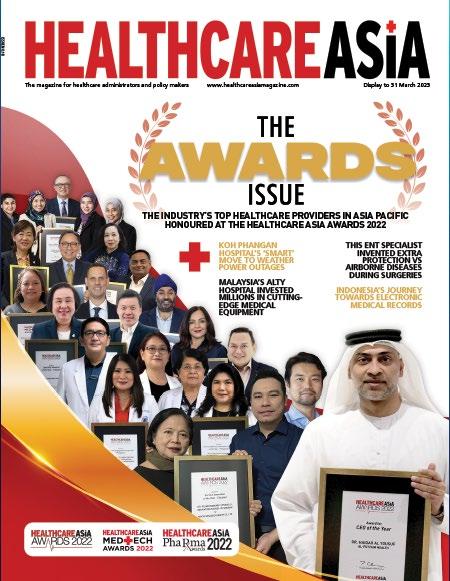




MEDIA PUBLISHER In Print, Online, Mobile, Events, Awards, and Research Asian Banking Finance Issue No. Singapore’s Best Selling Business Magazine HCASEPTFEB19.indd 9/21/2018 2:35:41 PM BUSINESS TO BUSINESS ASIA’S LEADING


















4 THE ASIAN BUSINESS REVIEW GET $20 INVESTMENT CREDITS WHEN YOU DOWNLOAD SNACK AND START SNACK INVESTMENT! REFERRAL CODE: AEA20 Receive free coverage and investment credits every time you spend with SNACK Partners REWARDS Promo T&Cs apply: income.sg/si-aea20 | Important Notes: income .com.sg/si-in | Protected up to specified limits by SDIC. This advertisement has not been reviewed by the Monetary Author ity of Singapore.








































 Nicole Bodack
Nicole Bodack



















































































































































 FPT AI Chat (chatbot) FPT AI Engage (voicebot)
AI
2.AI Contact Center Enhancement
FPT AI Chat (chatbot) FPT AI Engage (voicebot)
AI
2.AI Contact Center Enhancement






































































































































































































































